This is my review for the best superzoom camera for birding and wildlife photography in 2023.
Wild birds are notoriously difficult to photograph due to their tiny size and fast movements. To capture them you need a camera that will zoom in close and focus fast before they fly away! The same is true of many other wildlife scattering about in our yard.
I tested 5 superzoom bridge cameras and found the Nikon CoolPix P950 to be the best superzoom camera for bird and wildlife photography.
We all have different needs and wants when it comes to a camera for bird photography so I included reviews of the top brands and models for every category of shopper.
I’m sharing everything I learned with you as well as the results of my testing – including sample photos I took with each of the five cameras.
The 5 Best Superzoom Cameras for Birding & Wildlife Photography
To consider a bridge camera for birding it should have an extremely high optical capability (i.e. superzoom), fast autofocus, an image stabilization feature, a fast frame capture rate, and a minimum sensor size of 1/2.3″.
Nikon COOLPIX P950 Camera
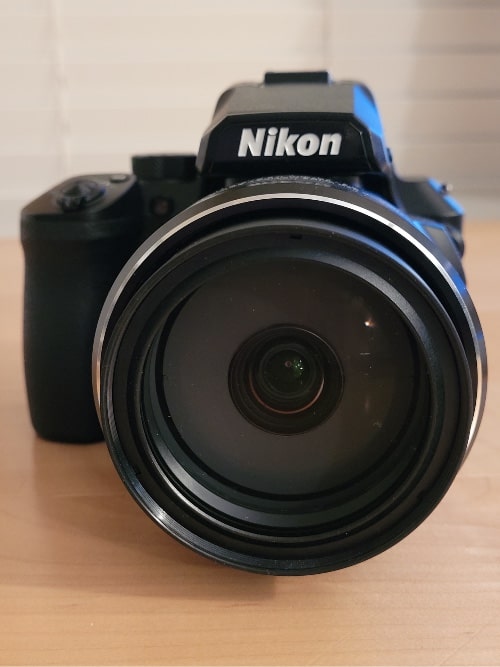
The Nikon Coolpix P950 is an excellent camera with an optical zoom of 83x that blows away all the competition with the exception of its older brother – the Nikon Coolpix P1000. Still – 83x is more than adequate zoom for bird photography.
Of all the cameras I bought and tested, I ended up keeping the Nikon Coolpix P950 and love it!
The P950 is ideal for the birder who wants extreme zoom capability, and great image quality, but in a slightly smaller & lighter body.
If you’re on the fence about the P1000 due to its weight or size, the P950 is for you. The P950 is smaller but still boasts its 2000mm focal length to capture the tiniest bird.
It’s less expensive than the P1000 (by about $200) and the focal length drops from 3000mm to 2000mm – but still, you’re getting 83x zoom! (See a comparison of the two COOLPIX cameras below)
Nikon COOLPIX P950 vs P1000 Comparison
| Nikon P950 | Nikon P1000 | |
| Weight | 2.2 # | 3.1# |
| Size | 5.6 x 4.4 x 5.9 “ | 5.8 x 4.7 x 7.2 “ |
| Zoom | 83x | 125x |
| Cost | $$$$ | $$$ |
Key Features
| Make & Model | Nikon Coolpix P950 |
| Optical Zoom | 83x |
| Auto Focus | Fast |
| Image Stabilization | Yes |
| Frame Capture Rate | 25 fps |
| Sensor | 1/2.3″ (6.2 x 4.6mm) CMOS |
| RAW format | Yes, supports RAW |
Pros & Cons
Pros
- Amazing optical zoom (83x) to get those close-ups.
- Excellent image quality.
- Fast autofocus speed so you don’t miss the shot.
- Easy to use with Bird mode, so you can start shooting pics right away.
- Multi-directional monitor, so you can easily size up the shot.
Cons
- Heavier than the other superzooms I tested.
- A stability device such as a monopod or tripod is needed when using full zoom.
Nikon Coolpix P950 Test Observations
When the camera arrived I immediately opened it, installed batteries & a memory card, set it to Bird mode, and started shooting. It was that fast and easy. And, it felt comfortable in my hands.
Optical Zoom Distance Test
Below are the results of the distance testing with the camera at full zoom.

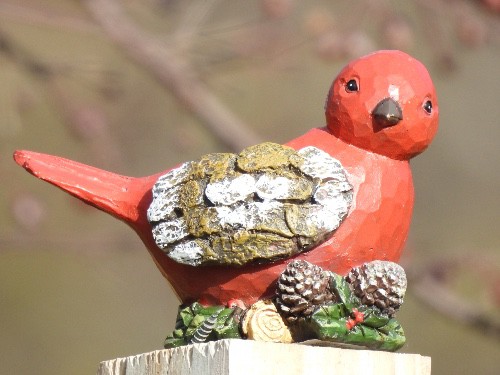
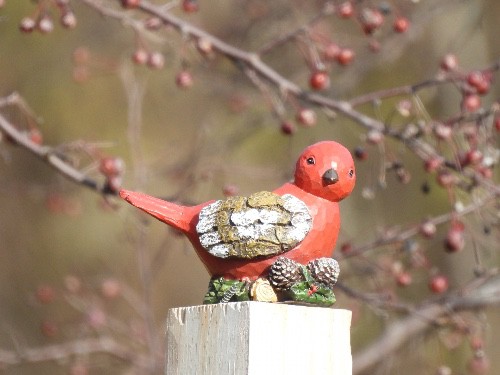
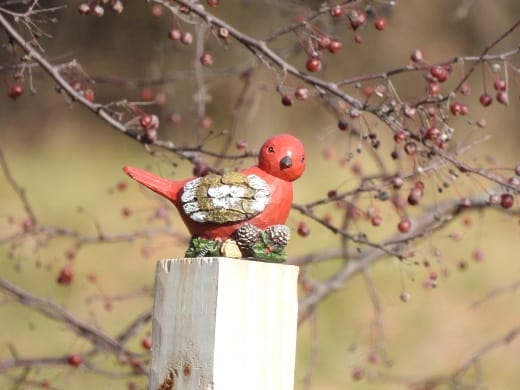
With the shooting mode set to continuous, I was able to capture many great shots each time.
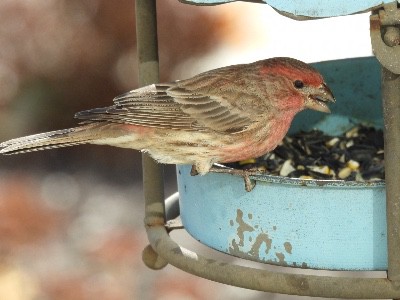
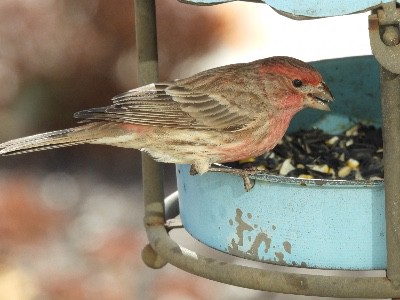
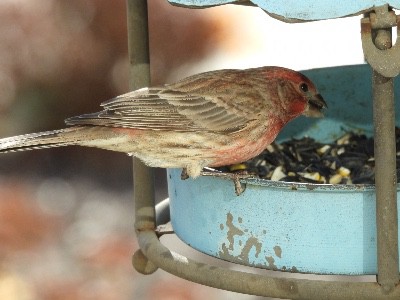
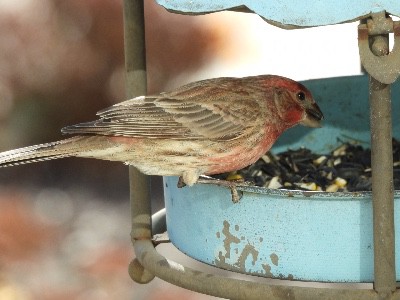
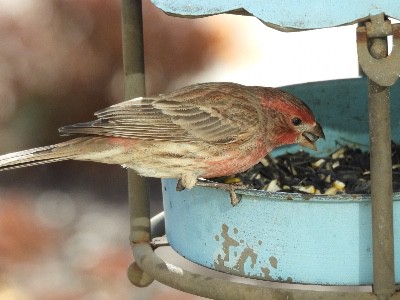
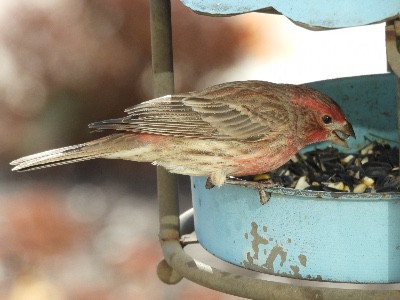
I found the autofocus speed to be very quick, which is essential for bird photography.
The Nikon Coolpix P950 was noticeably lighter and smaller than the P1000. Keep in mind this camera has an optical zoom of 83x so it needs larger housing and some weight to contain this lens.
In other words, you get a phenomenal optical zoom reach with the P950 and have to expect some type of trade-off. In this case, it’s a camera that’s a bit larger and heavier than the others. Still, it’s MUCH lighter and smaller than a DSLR setup with a comparable zoom lens.
It really comes down to personal preference. After purchasing and testing both the Nikon Coolpix P950 & P1000 superzoom cameras, I opted to keep the Nikon Coolpix P950 because it was lighter and smaller.
Tammy Poppie
At full zoom, the Nikon Coolpix P950 requires a monopod or tripod for most people.
Alternatively, be sure to enable the camera’s image stabilization. Nikon’s system is referred to as a Dual Detect Optical Vibration Reduction system. It works to stabilize both horizontal and vertical movements and works great. I shot all my pics freehand.
More Nikon Coolpix P950 Images
Below are additional photos taken with the Nikon Coolpix P950. They’re unedited and perhaps not the best in terms of composition but provide a sample of the camera’s image quality and zoom.
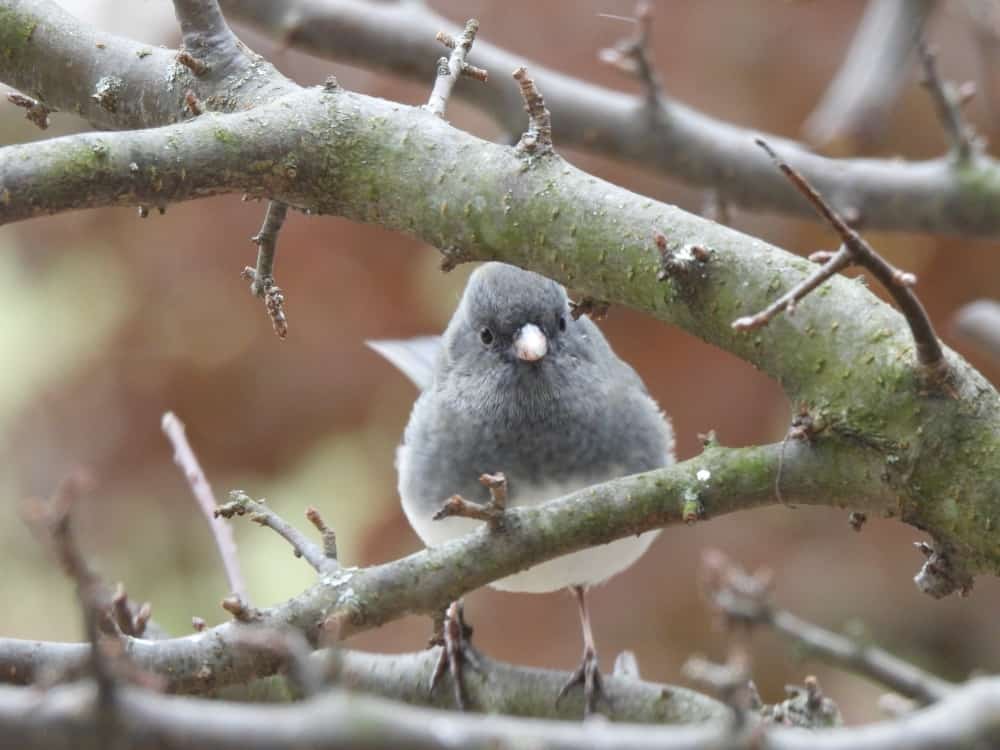
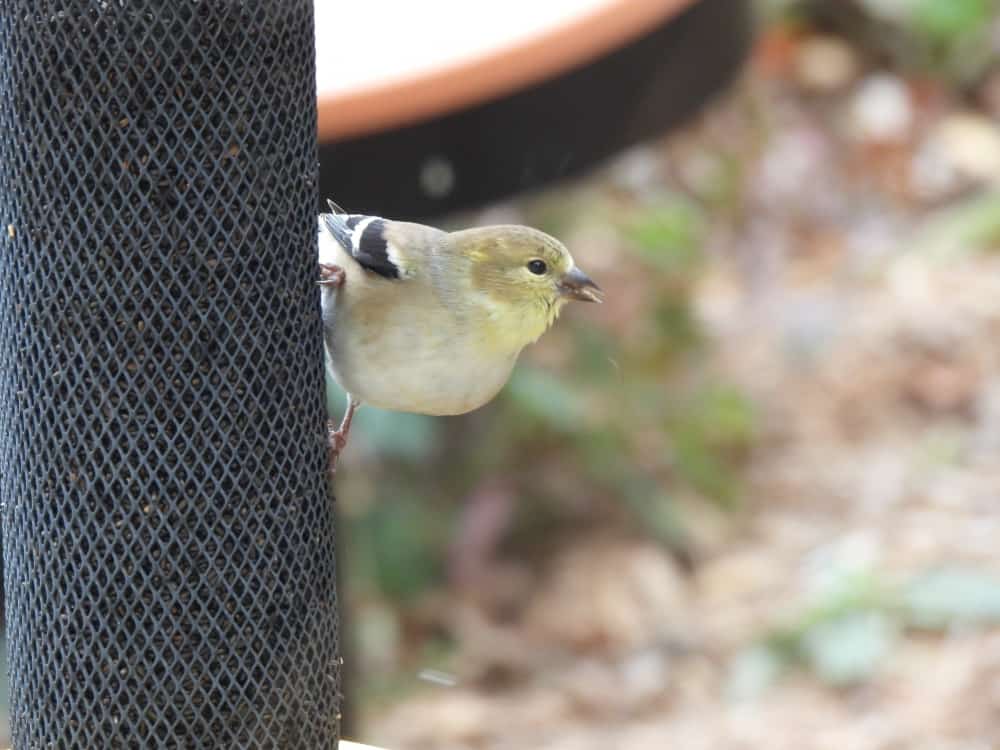
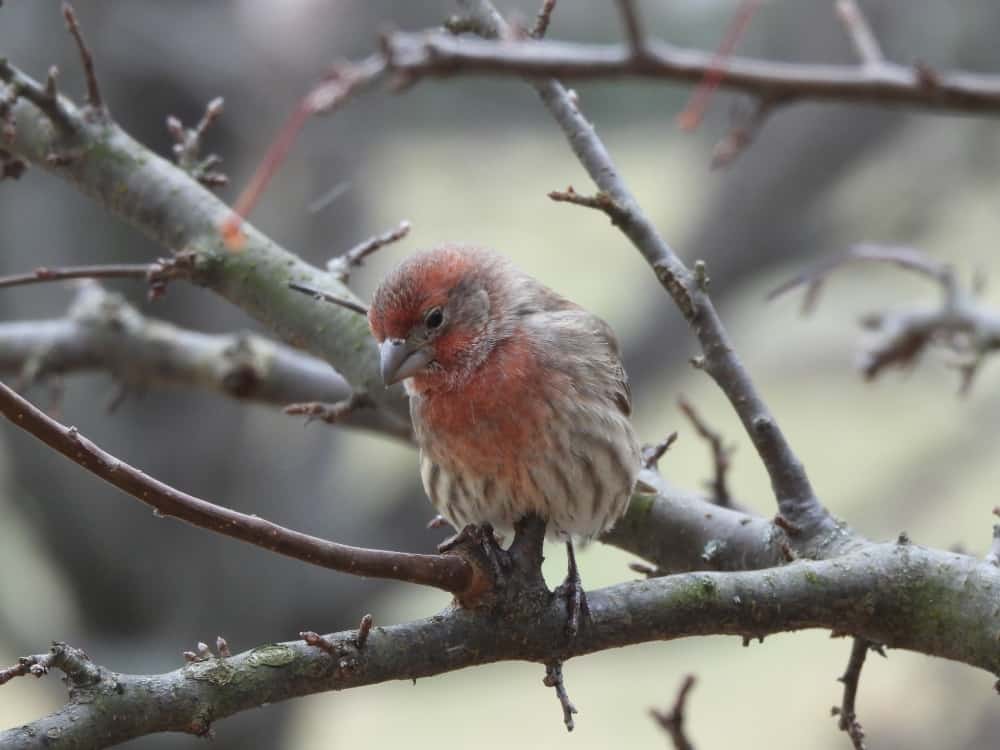
Nikon COOLPIX P1000 Camera
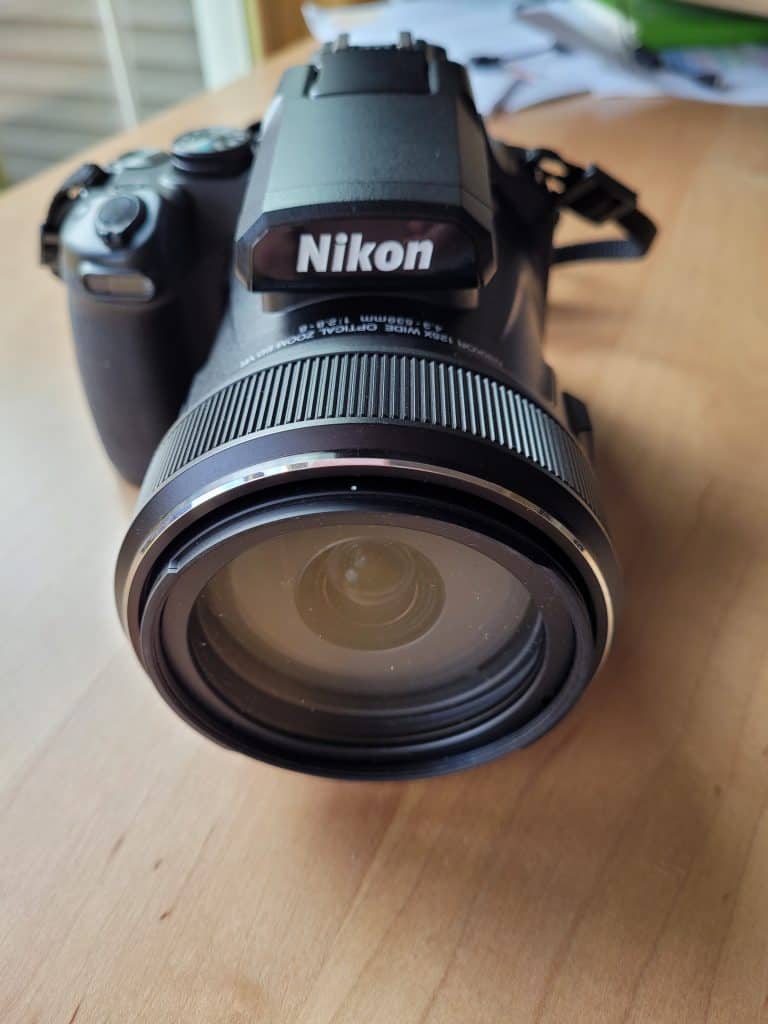
The Nikon Coolpix P1000 is an excellent camera with a mind-blowing optical zoom capability – 125x! However, it’s a large and relatively heavy camera.
It’s ideal for the birder who won’t settle for less than the maximum zoom capability and demands great image quality – even at full zoom from 100′ away.
It’s one of the highest-priced cameras in the ultra zoom category but with 125x optical zoom, it’s still thousands of dollars less than a DLSR or Mirrorless attached to a telephoto zoom lens. And, it’s lighter!
Key Features
| Make & Model | Nikon Coolpix P1000 |
| Optical Zoom | 125x |
| Auto Focus | Fast |
| Image Stabilization | Yes |
| Frame Capture Rate | 7 fps |
| Sensor | 1/2.3″ (6.2 x 4.6mm) CMOS |
Pros & Cons
Pros
- Astounding optical zoom (125x) to get those close-ups even when 100+ feet away.
- Excellent image quality near and far (100’ +) for greater versatility.
- Fast autofocus speed so you don’t miss the shot.
- Easy to use so you can start shooting pics right away.
- Multi-directional monitor, so you can easily size up the shot.
Cons
- It’s the heaviest superzoom bridge camera available.
- A stability device such as a monopod or tripod is needed for greater distances using full optical zoom.
Nikon Coolpix P1000 Test Observations
When the camera arrived I immediately opened it, installed batteries & a memory card, set it to Bird mode, and started shooting. It was that fast and easy. It was also heavier than I expected.
Optical Zoom Distance Test
Below are the results of the distance testing with the camera at full zoom.
I did not include a photo from a 15′ distance because the Nikon Coolpix P1000’s optical zoom was too strong for the wooden bird at a short distance.
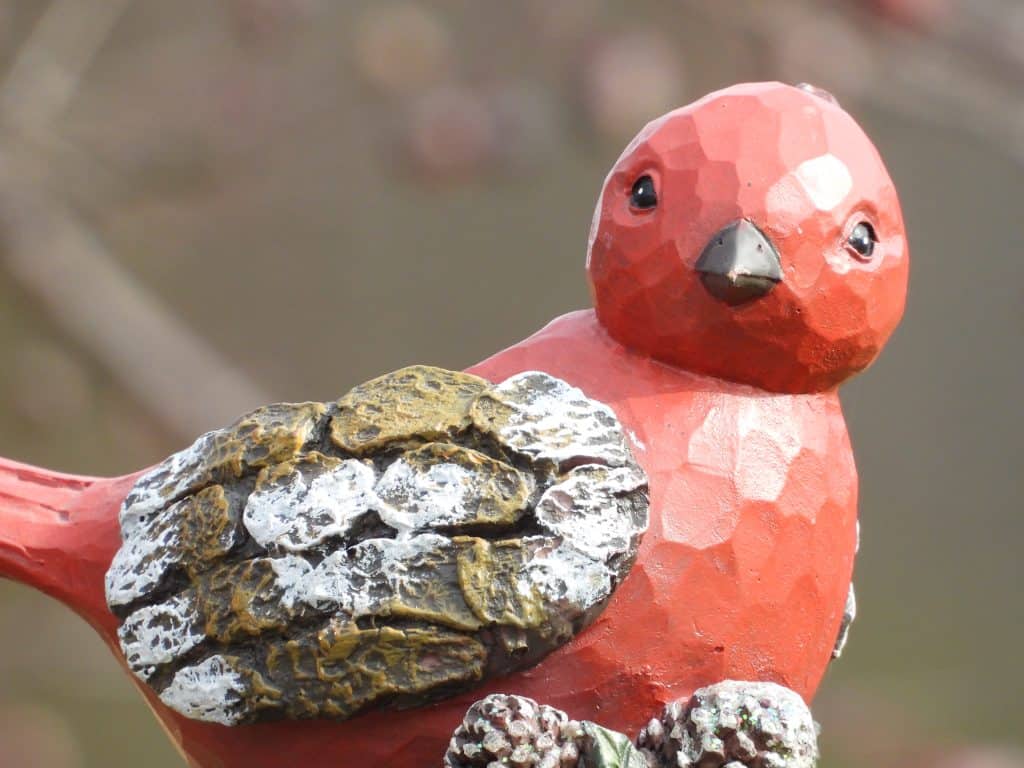
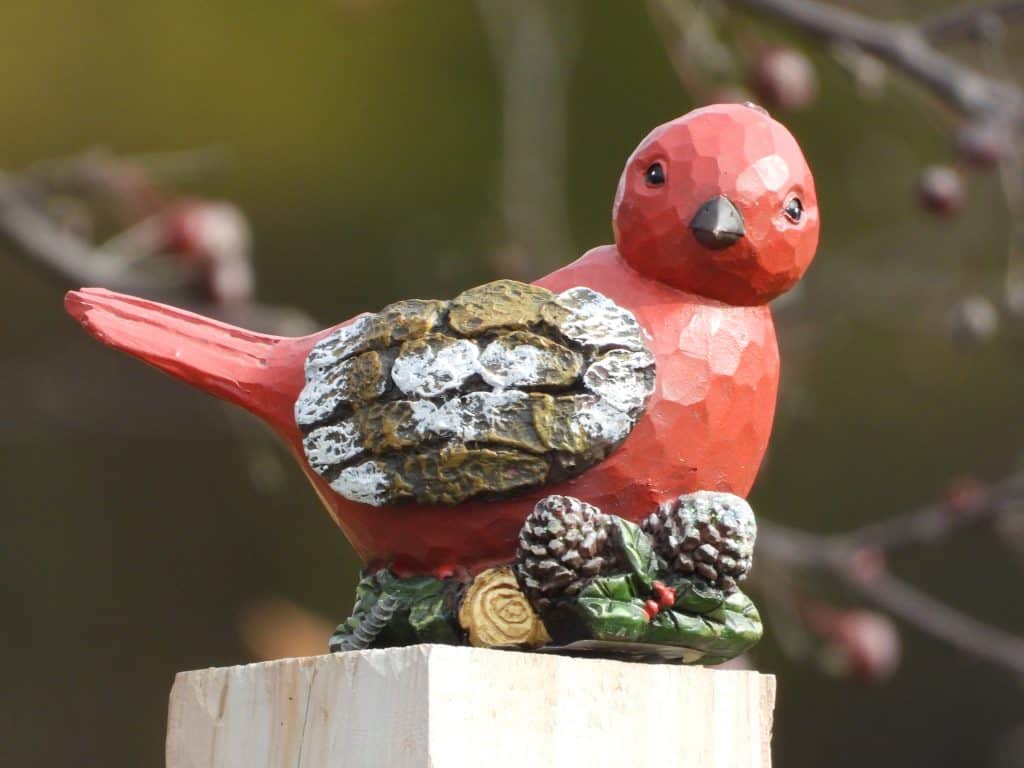
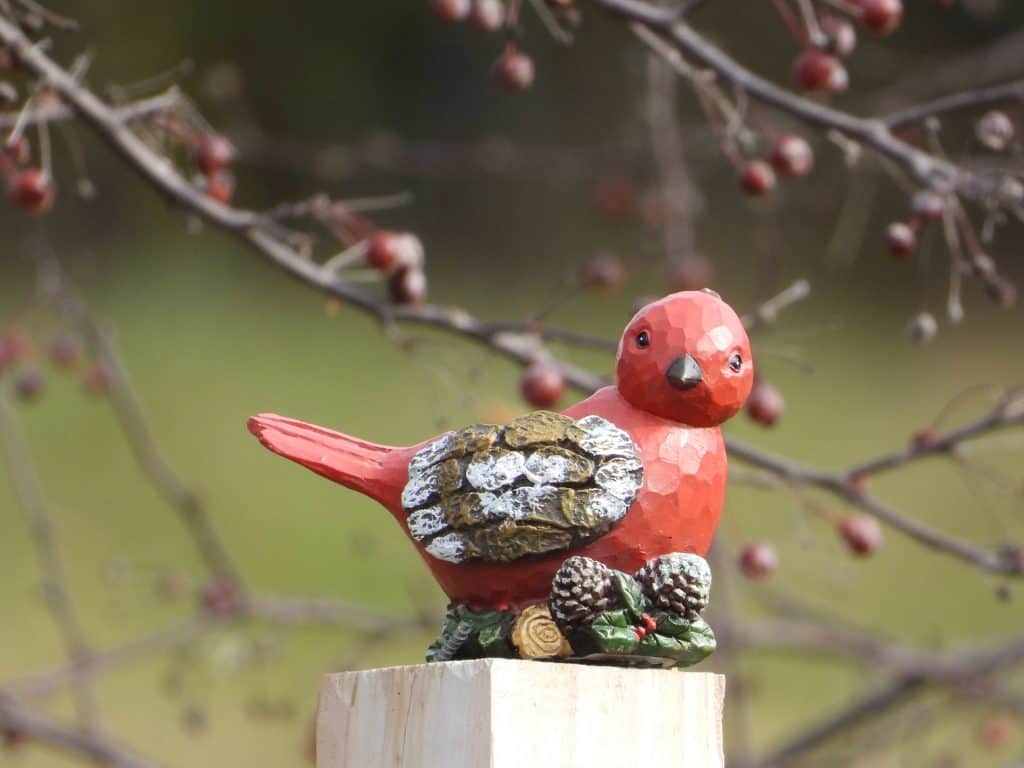
The Nikon Coolpix P1000 camera is up to the task of zooming in on birds far away. Check out the pic below taken more than more than 100’ from the subject!
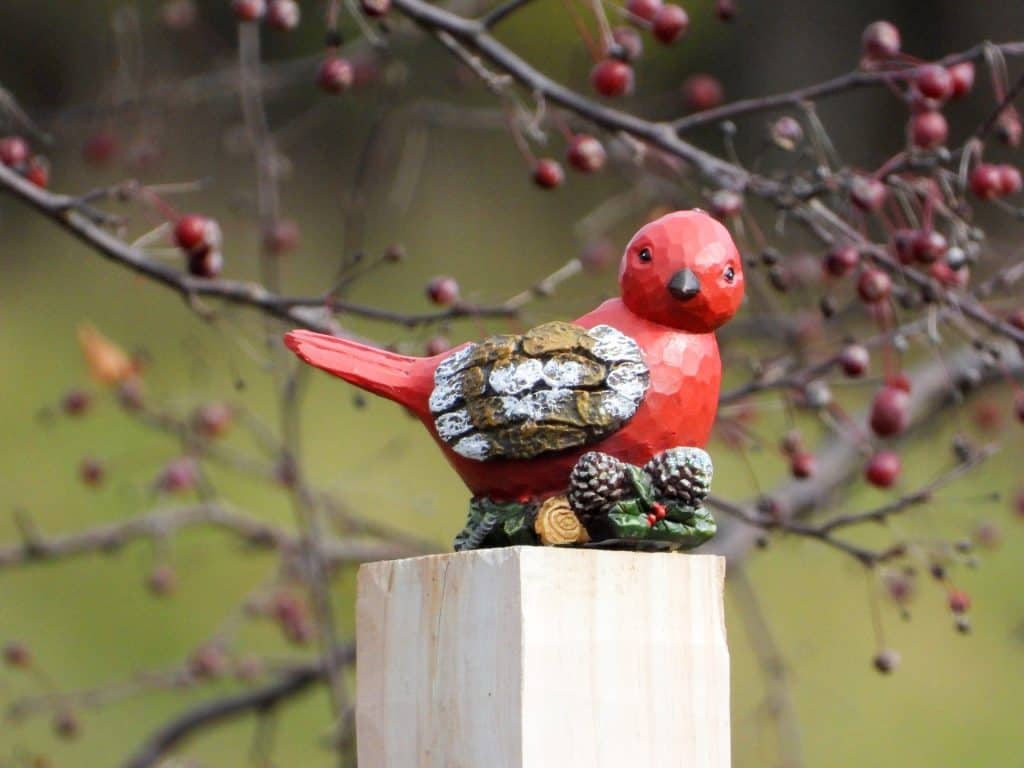
With the shooting mode set to continuous, I was able to capture more than 10 great shots each time. Although it’s not the fastest camera I tested (only 7fps), it was plenty fast for me.
And, because the quality of each shot was great it didn’t matter. In fact, I literally had a difficult time choosing the best shot. They were all that good.
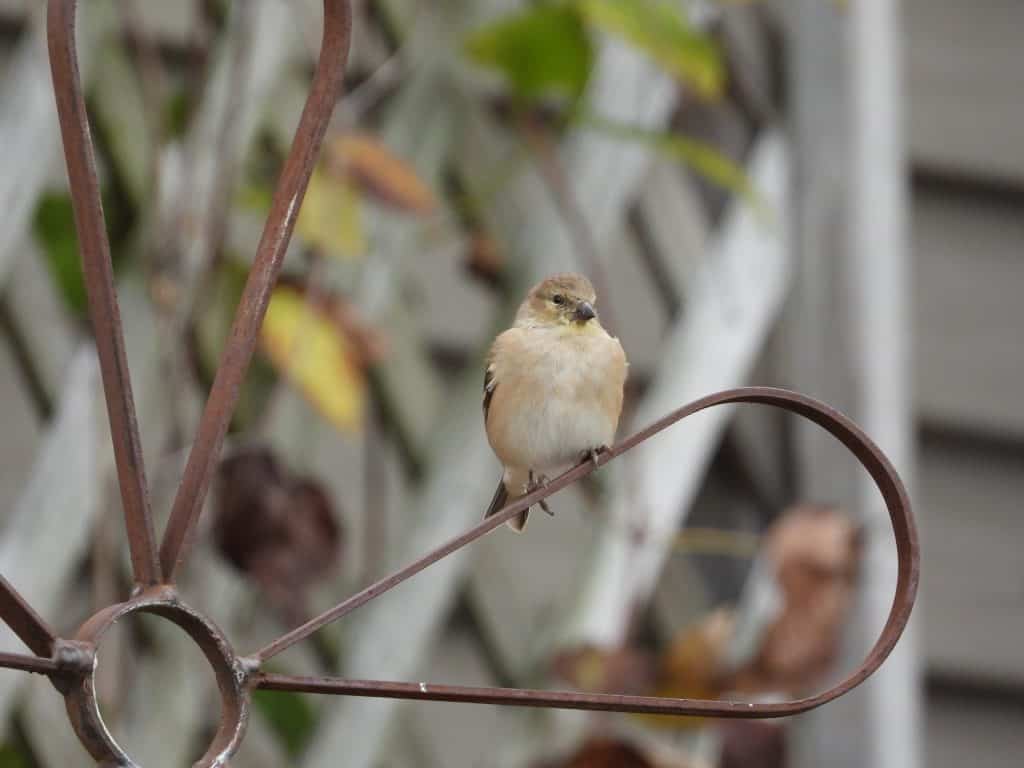
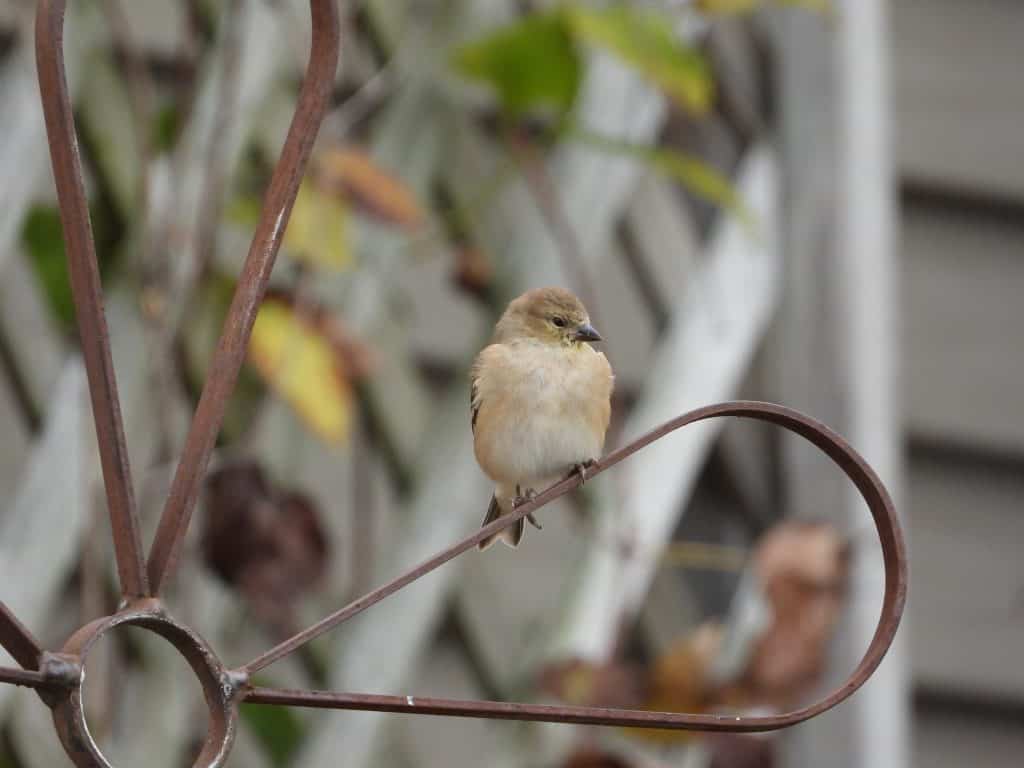
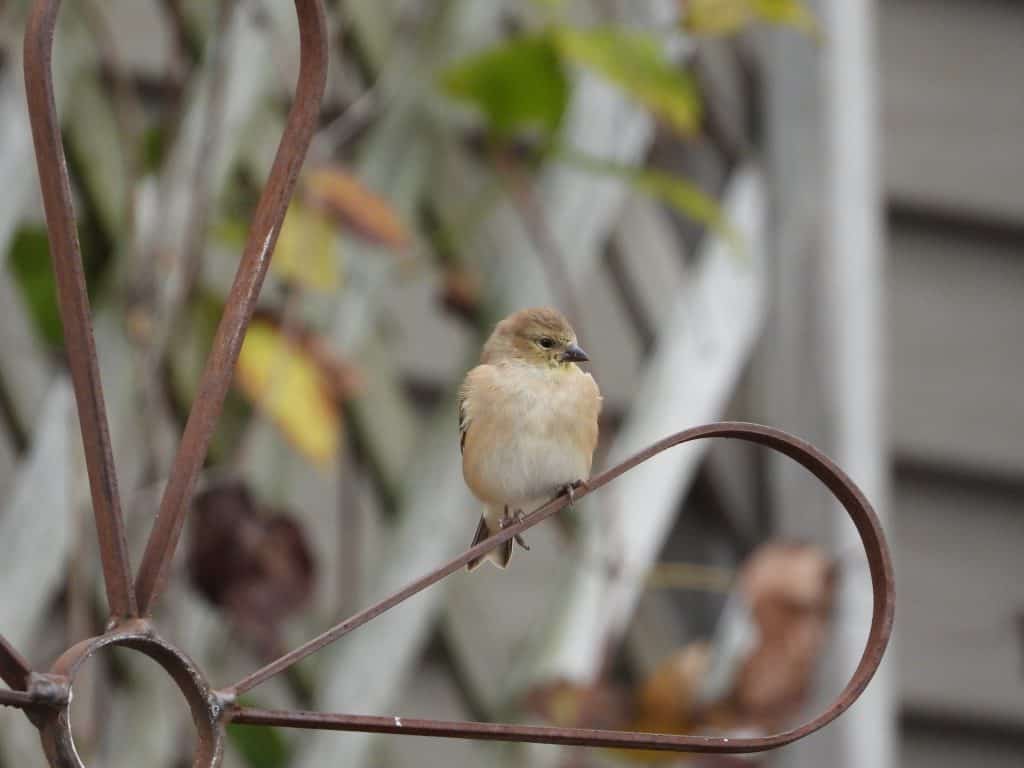
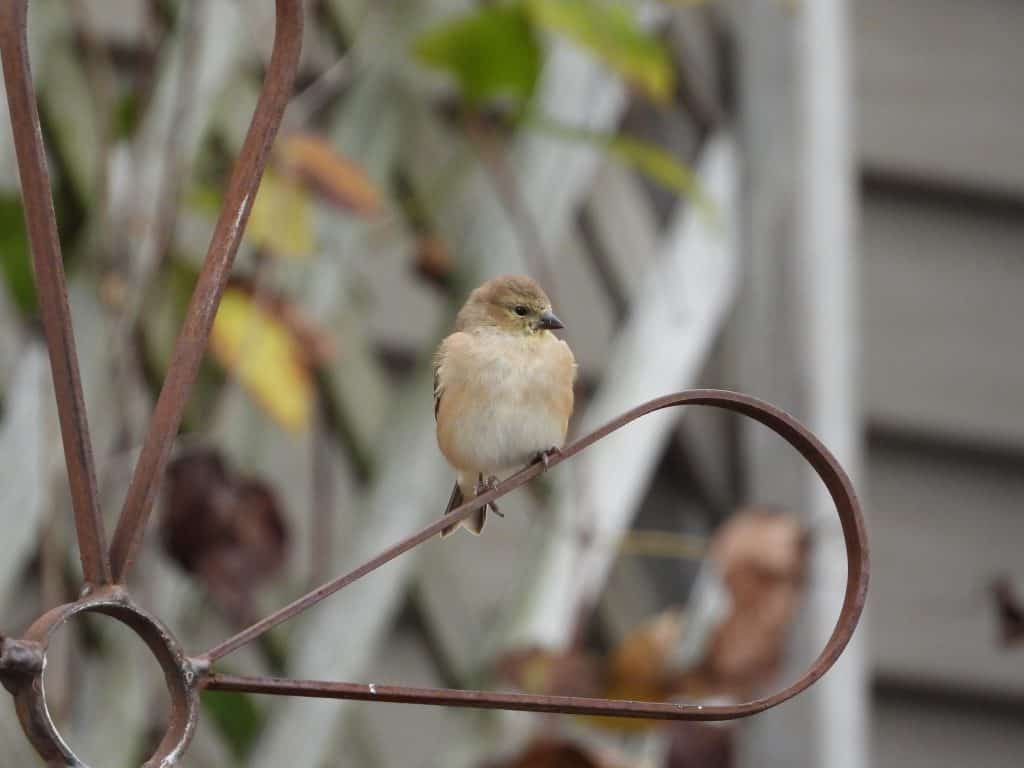
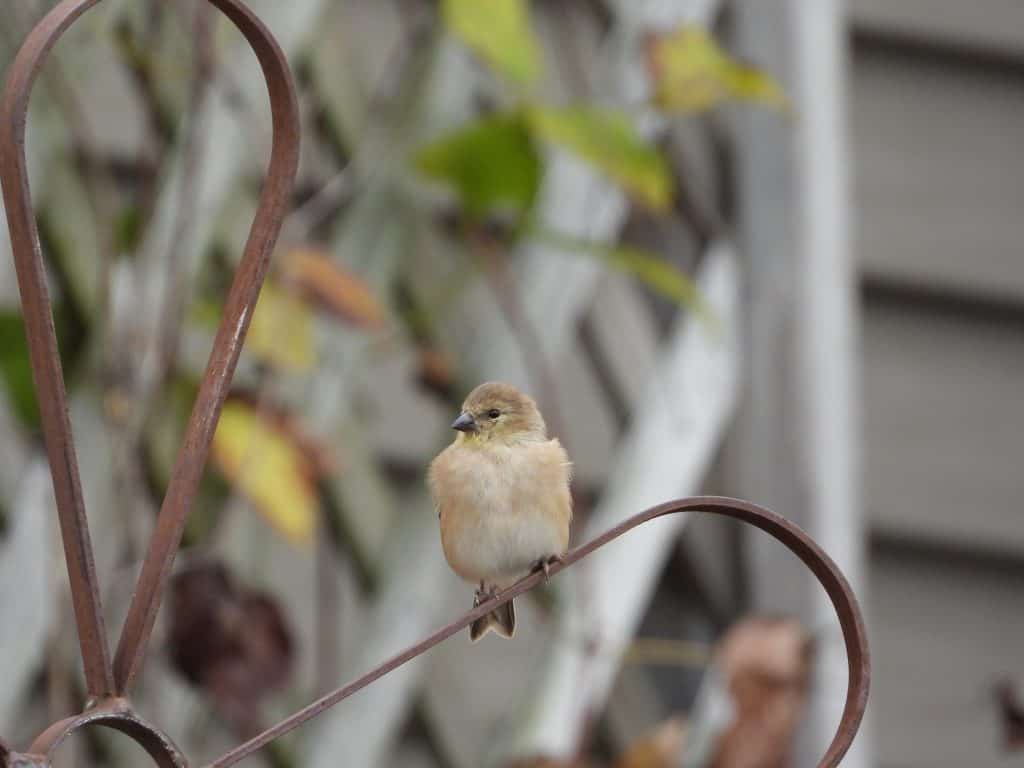
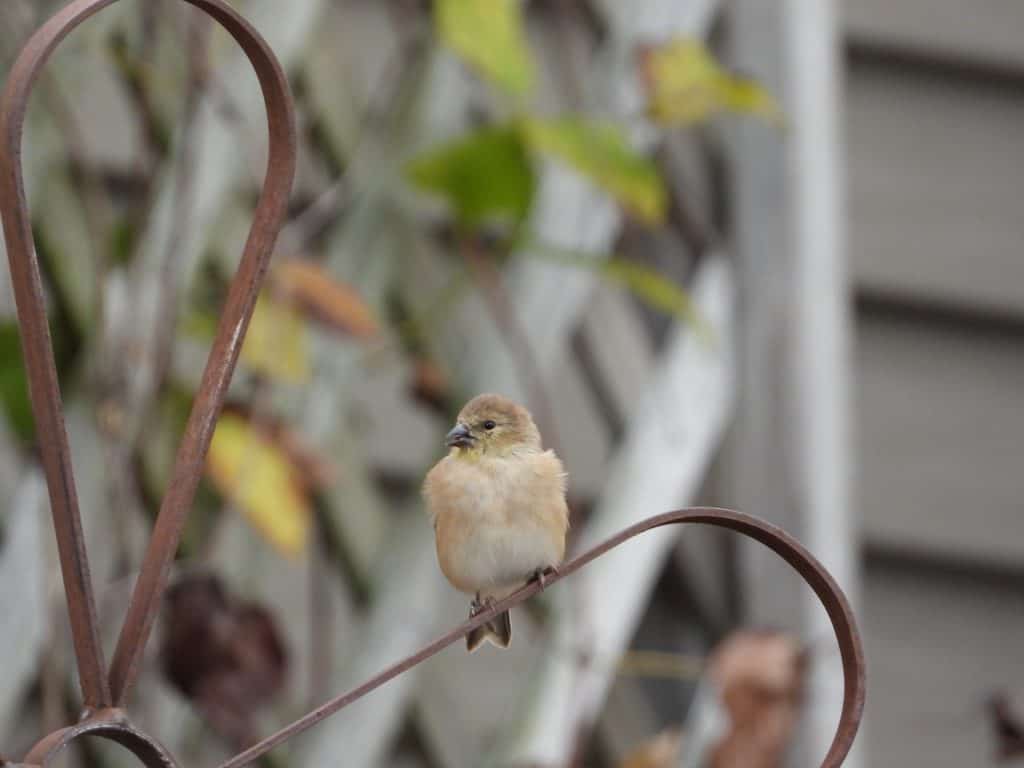
Nikon doesn’t explicitly state the speed of the autofocus and I didn’t get out a stopwatch and test the actual autofocus speed but found it to be really fast.
I took the Nikon Coolpix P1000 to a nearby nature park and although it’s the heaviest (3 lbs) and largest (5.8″ x 4.7″ x 7.1″) ultra zoom camera I tested, I felt like I was just carrying “a camera” vs. “a really heavy cumbersome camera”. I think it boils down to personal preference.
Unless you’re one of those people with a really steady hand, a monopod or tripod is needed for really far distances otherwise, the camera has trouble focusing on the subject due to camera movement.
The shots below were from a distance of more than 150’ and full zoom. I had a difficult time keeping the camera still enough to let the autofocus do its job.
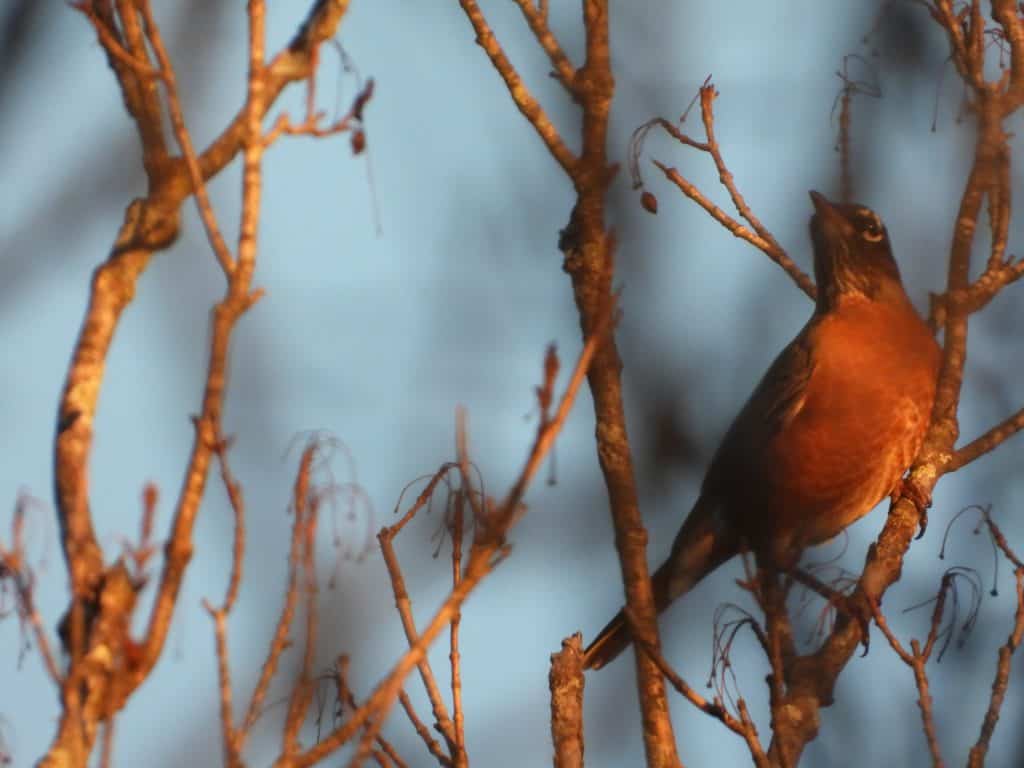
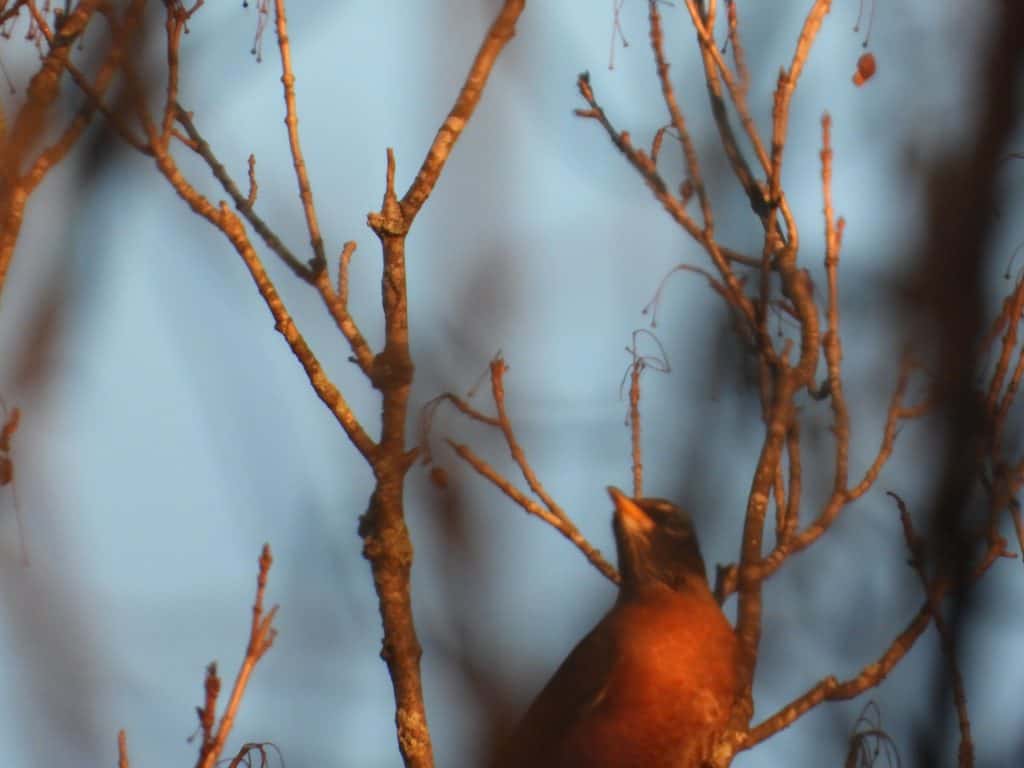
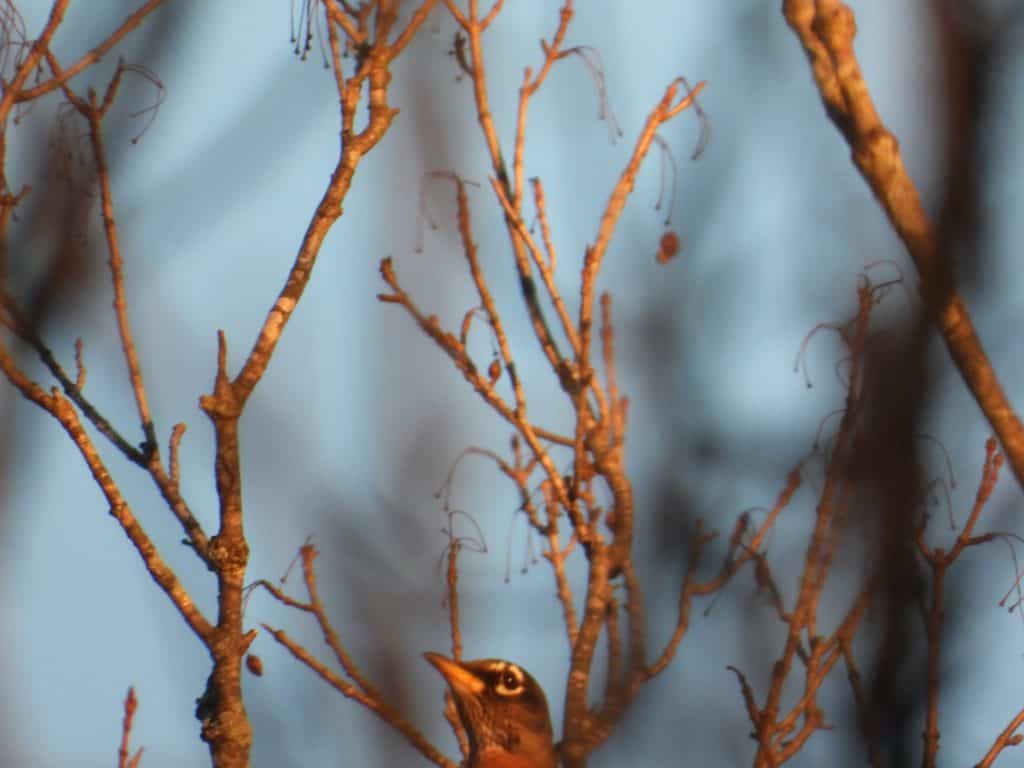
That said, for the shots under 100′ I really appreciate the image stabilization on the P1000. I shot all of the pictures freehand and they’re pretty clear and crisp but would have been better with a tripod or monopod.
More Nikon Coolpix P1000 Sample Images
Below are additional photos taken with the Nikon Coolpix P1000. They’re unedited and perhaps not the best in terms of composition but provide a sample of the camera’s image quality and zoom.
I captured the next several photos using the Nikon Coolpix P1000 about 10′ feet away, zoomed-in but not full zoom.
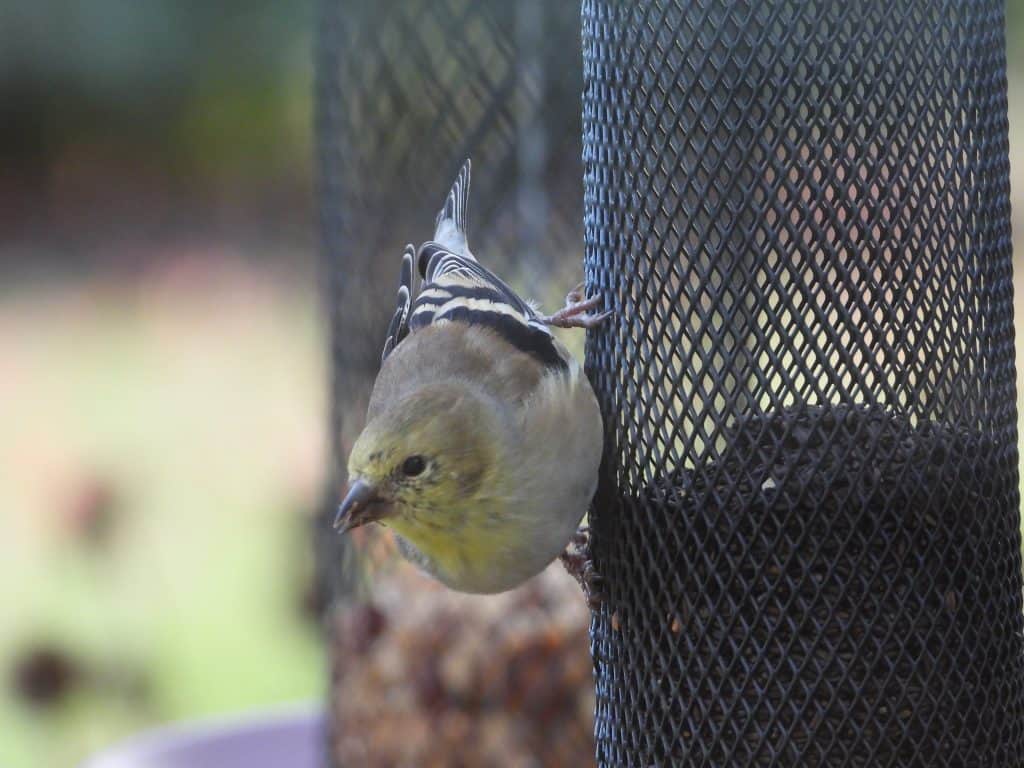
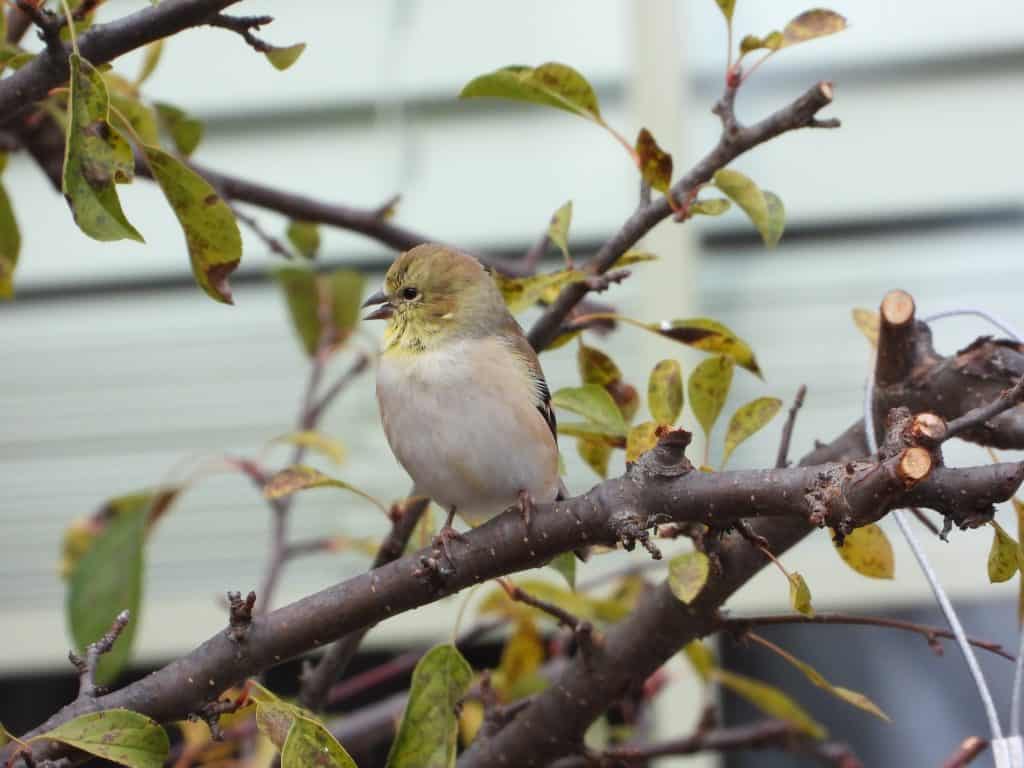
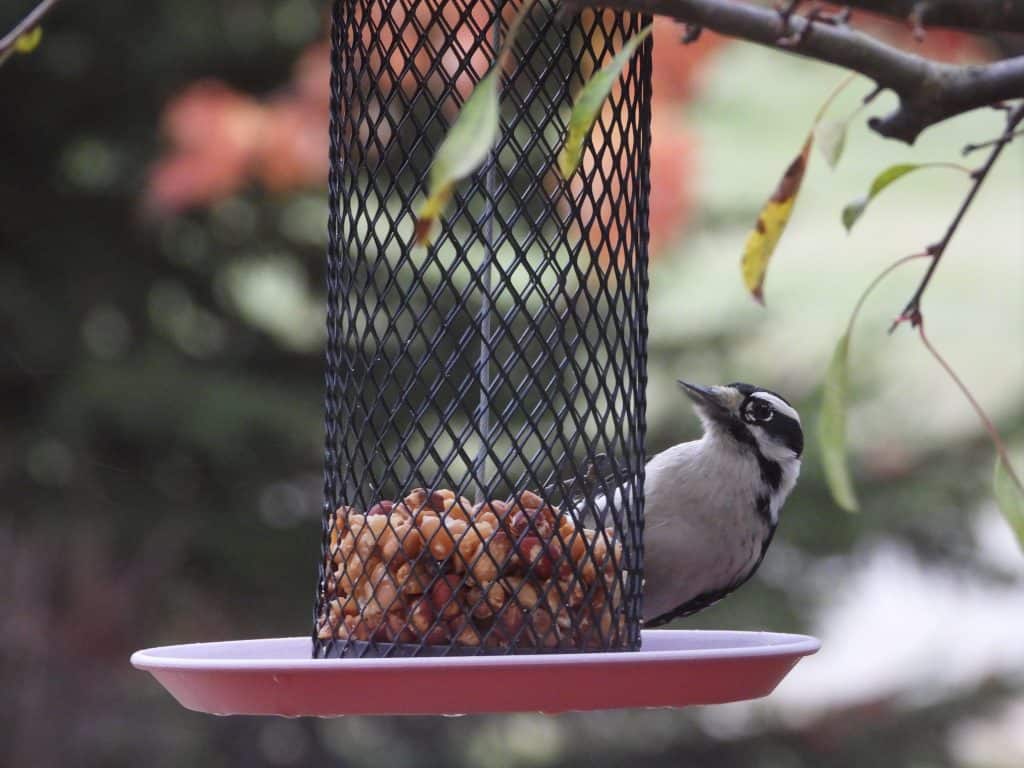
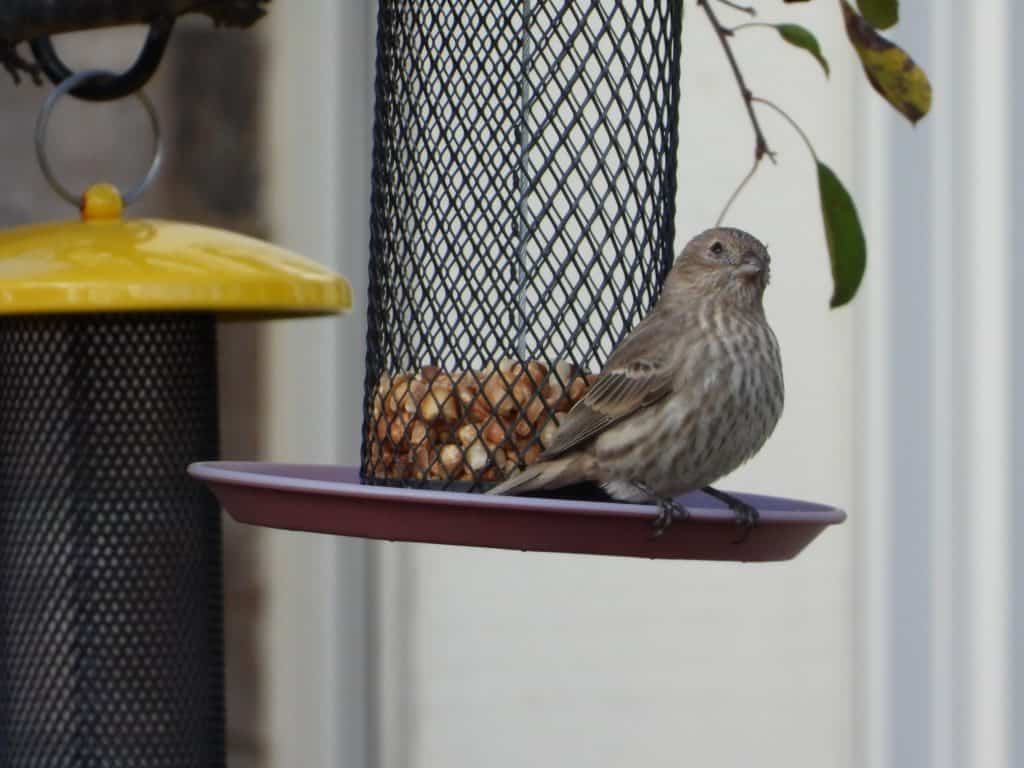
Canon PowerShot SX70 HS Camera
If you’re looking for the best superzoom compact camera, look no further than the Canon PowerShot SX0 HS!
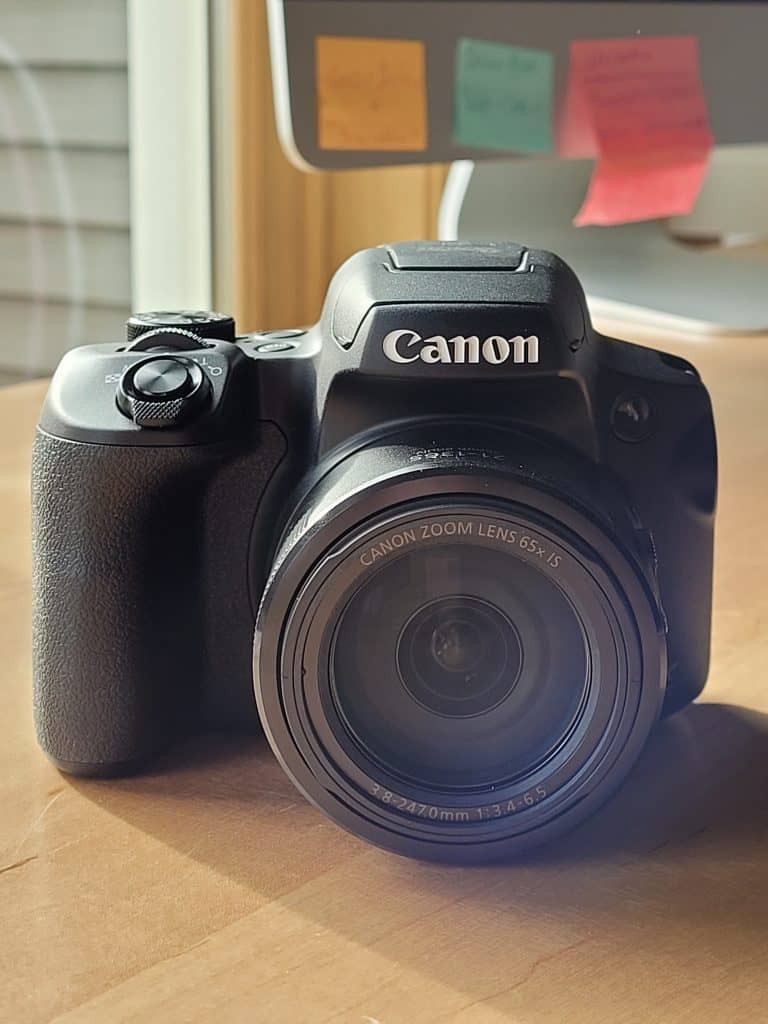
The Canon PowerShot SX70 HS is a fun, compact camera with an impressive optical zoom of 65x. It’s ideal for the backyard birder who wants to be able to zoom in close on birds on the feeder or near the deck/patio.
Compared with the Nikon Coolpix P950 and P1000, the Canon is much smaller, lighter, compact and less expensive. At about 1/2 the zoom capability of the Nikon Coolpix P1000 (125x) it still packs a punch and is more than adequate for birding and other small wildlife.
When capturing shots of small birds, its sweet spot at full zoom is about 25′ or closer.
Key Features
| Make & Model | Canon PowerShot SX70 HS |
| Optical Zoom | 65x |
| Auto Focus | Fast |
| Image Stabilization | Yes |
| Frame Capture Rate | 10 |
| Sensor | 1/2.3″ (6.2 x 4.6mm) BSI CMOS |
| RAW Format | Yes, supports RAW |
Pros & Cons
After unboxing and charging the battery it was ready to go. I did have to fiddle with the settings a bit since it doesn’t have a Bird mode.
Pros
- Tremendous zoom capability (65x) to capture great shots of small birds close up.
- Small & lightweight.
- Vari-angle monitor to easily set up the shot.
- Great image quality.
Cons
- Doesn’t have a Bird mode so getting started was slower.
Canon PowerShot SX70 HS Test Observations
I was impressed with the image quality, especially zoomed-in. The autofocus speed was lickety-split. That combined with the fast image capture rate (10 fps), I didn’t miss any shots.
The Canon PowerShot SX70’s viewfinder is large and I was able to swing the monitor out to the side, rotate 360, and place it back in its compartment with the monitor facing outward. I found the flexible monitor really helpful when getting the shot ready, reviewing it afterward, and navigating the camera’s menu system.
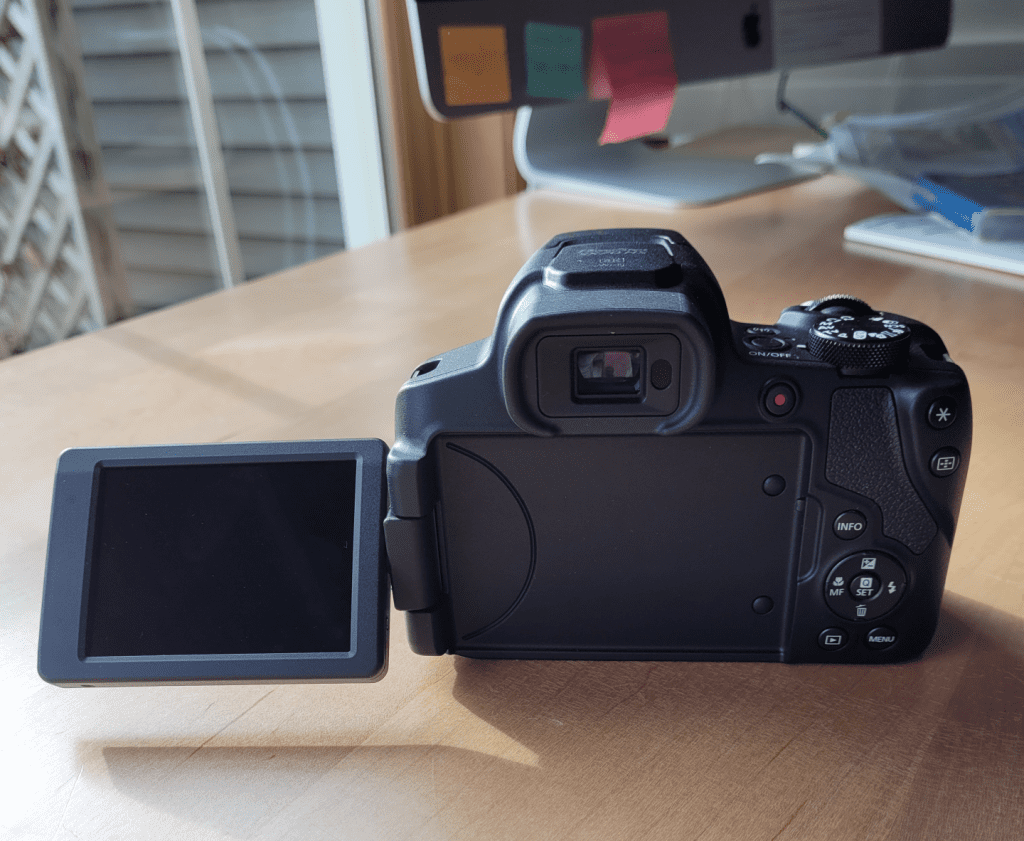
As you’ll soon see, the image quality is really very good. Kudos to the image stabilization as most shots were very sharp and clear, even in full zoom, without a tripod or other stability method.
Optical Zoom Distance Test
Below are the results of the distance testing with the Canon PowerShot SX70 HS camera at full zoom.
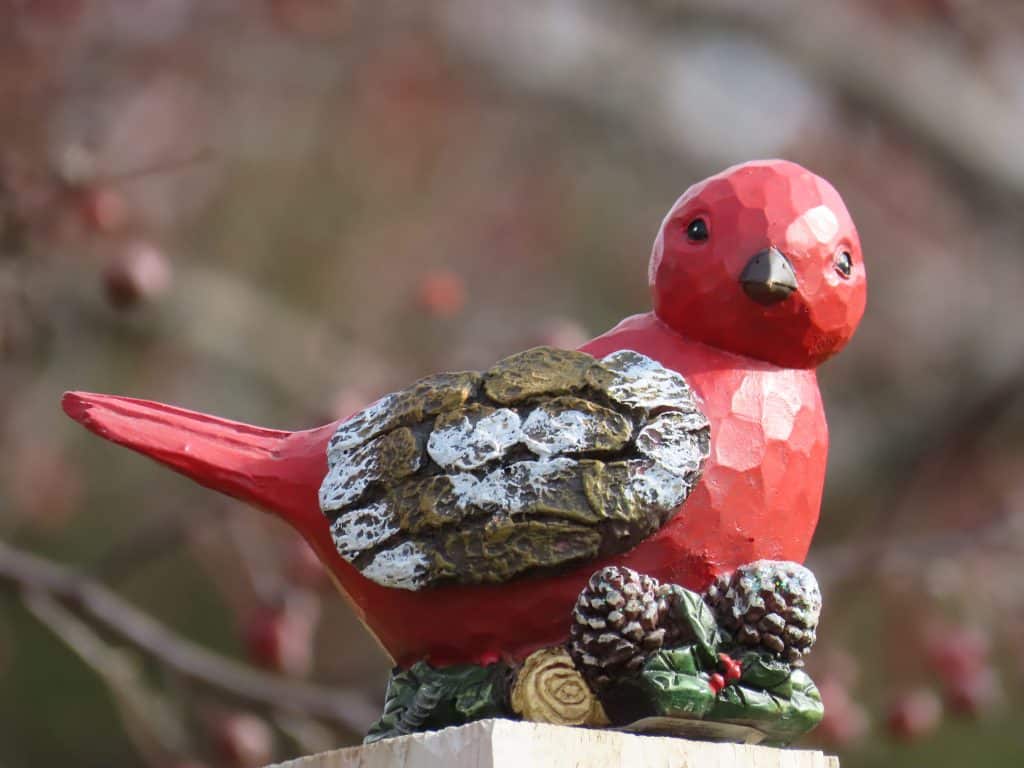

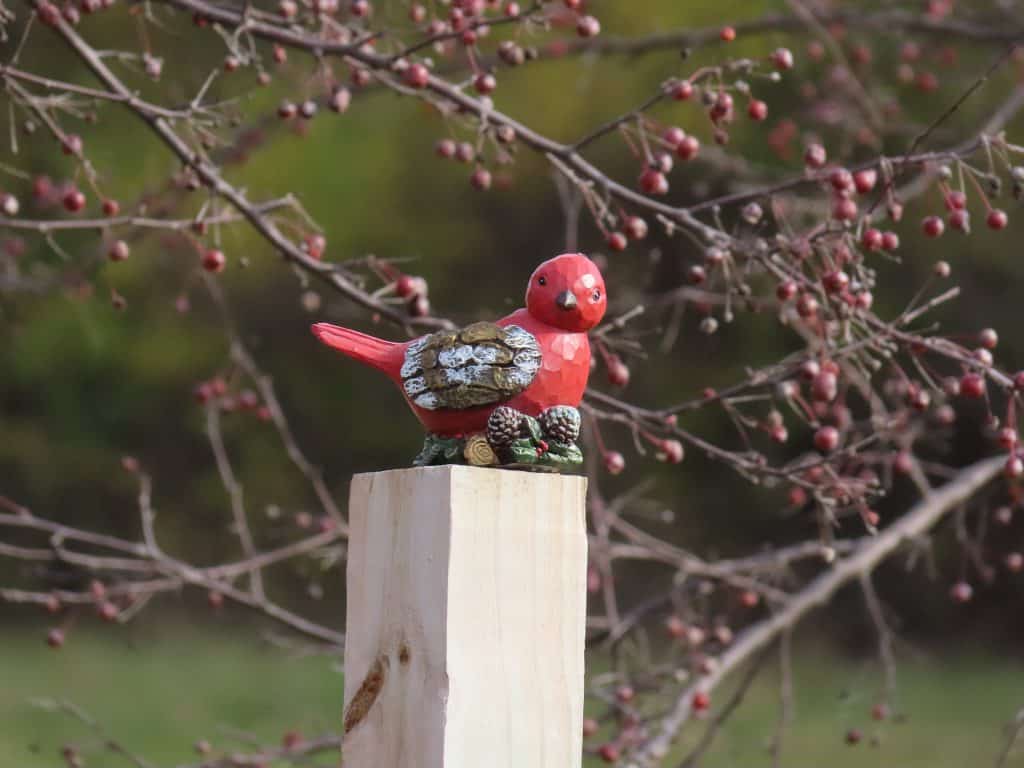
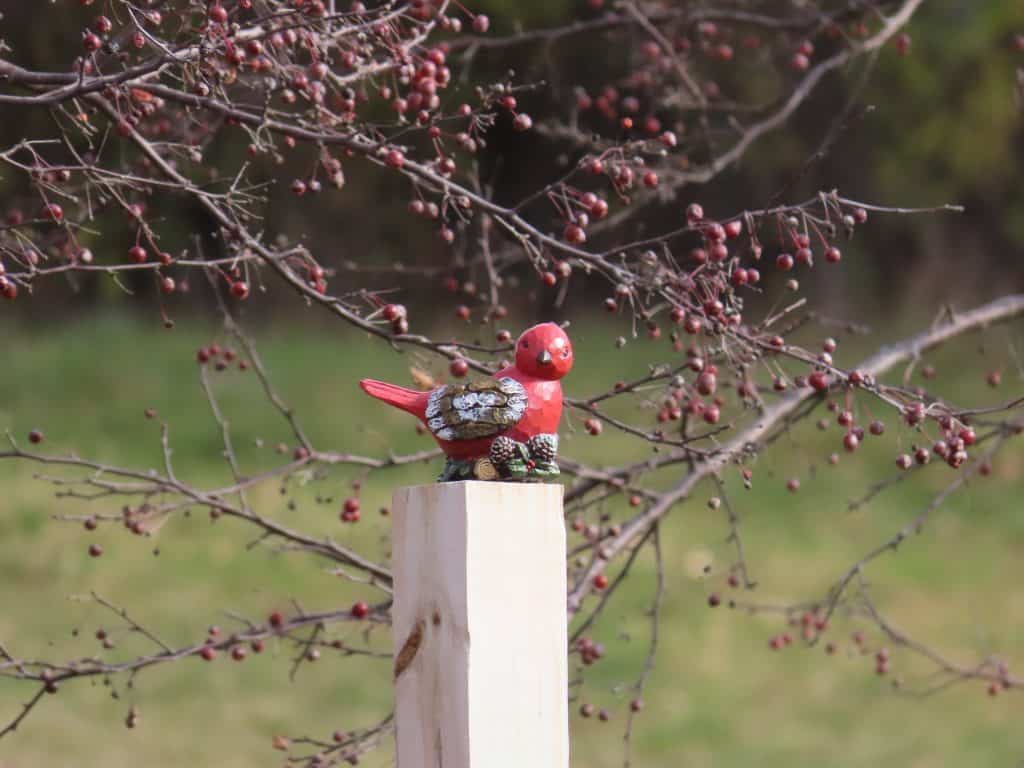
More Canon PowerShot SX70HS Sample Images
Below are additional photos taken with the Canon PowerShot SX70HS. They’re unedited and perhaps not the best in terms of composition but provide a sample of the camera’s image quality and zoom. And yes, I like chickadees!
I captured the following photos using the Canon PowerShot SX70HS.
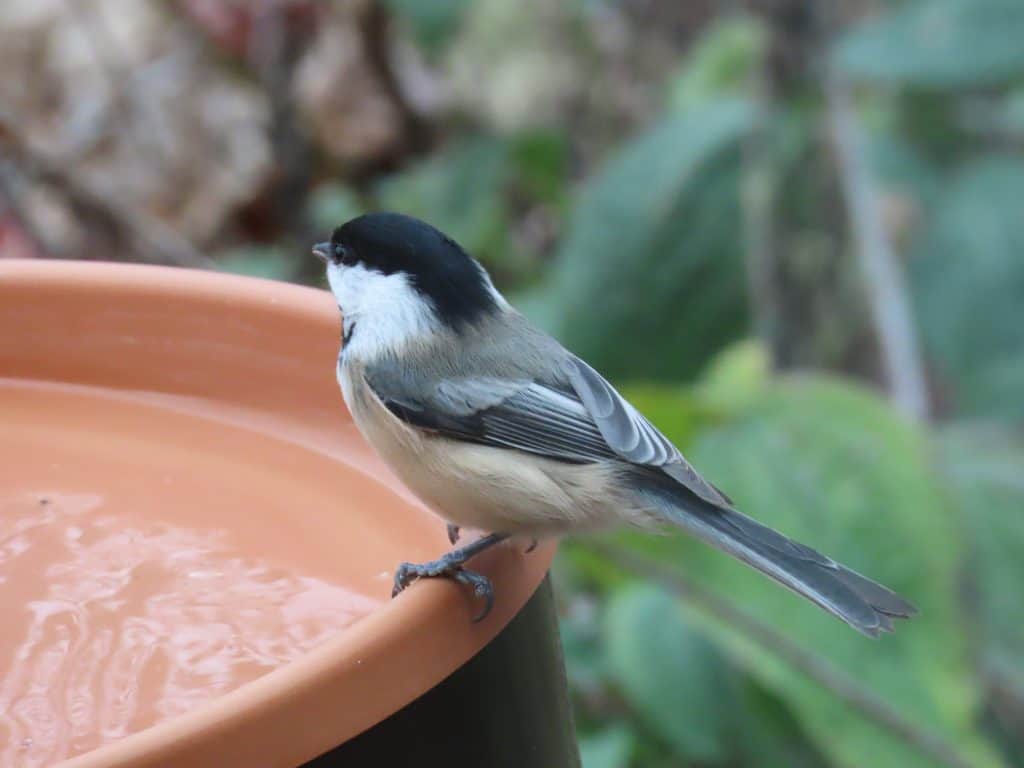
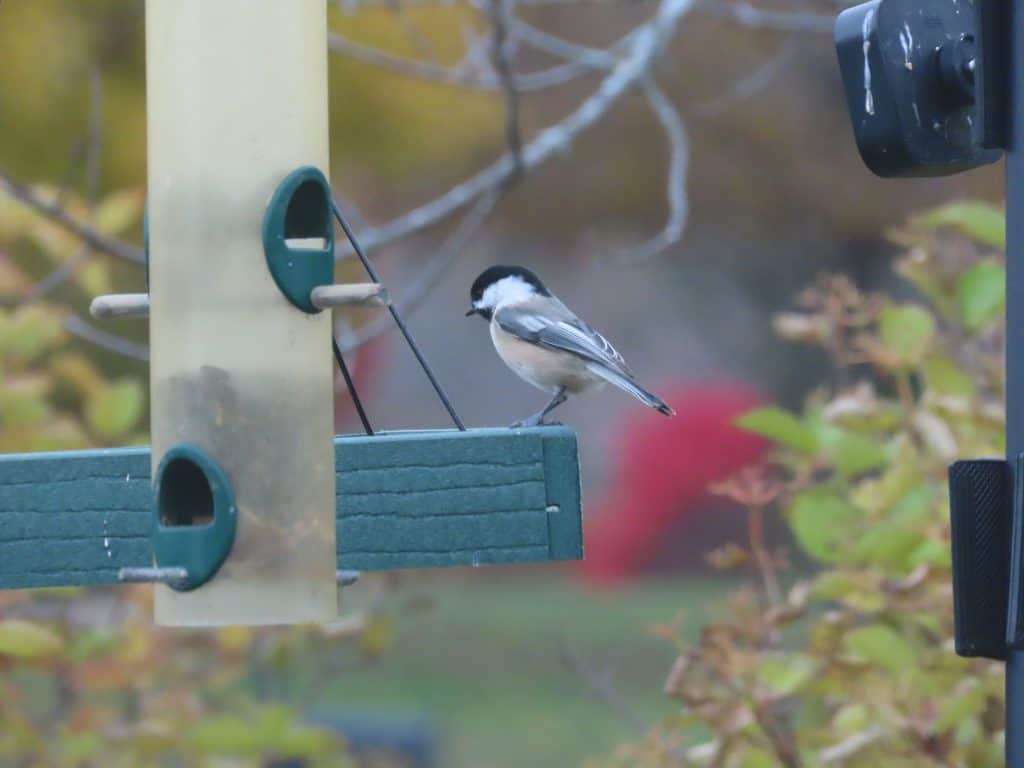
I photographed this black-capped chickadee about 25′ away.
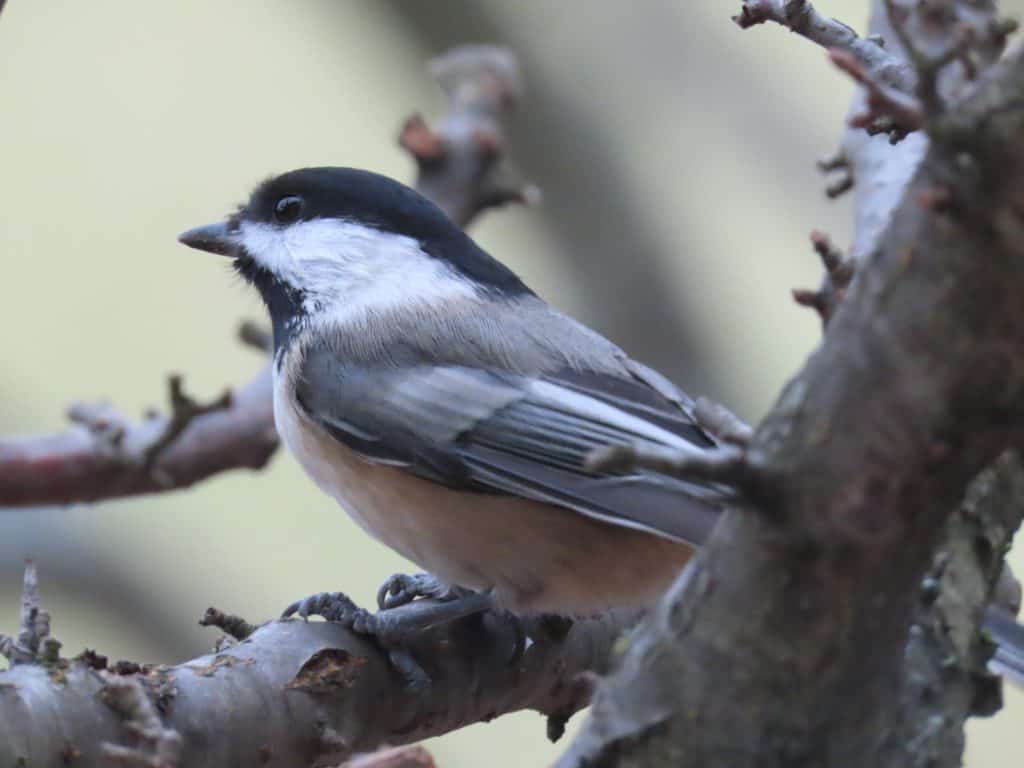
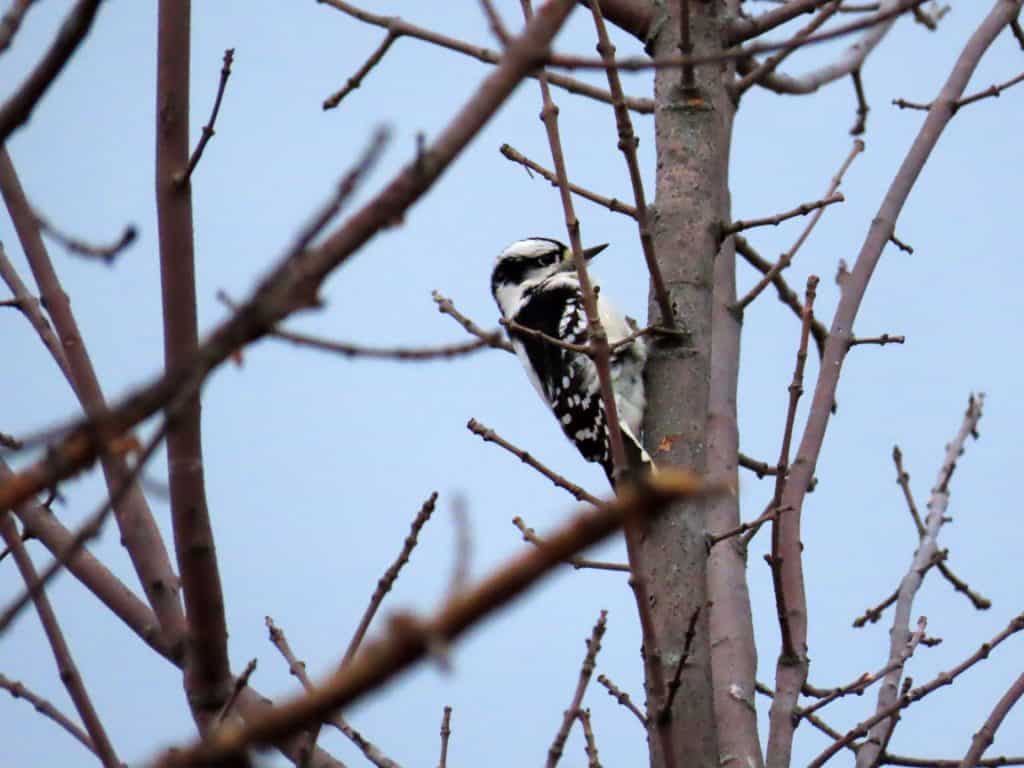
Panasonic Lumix FZ80 Camera
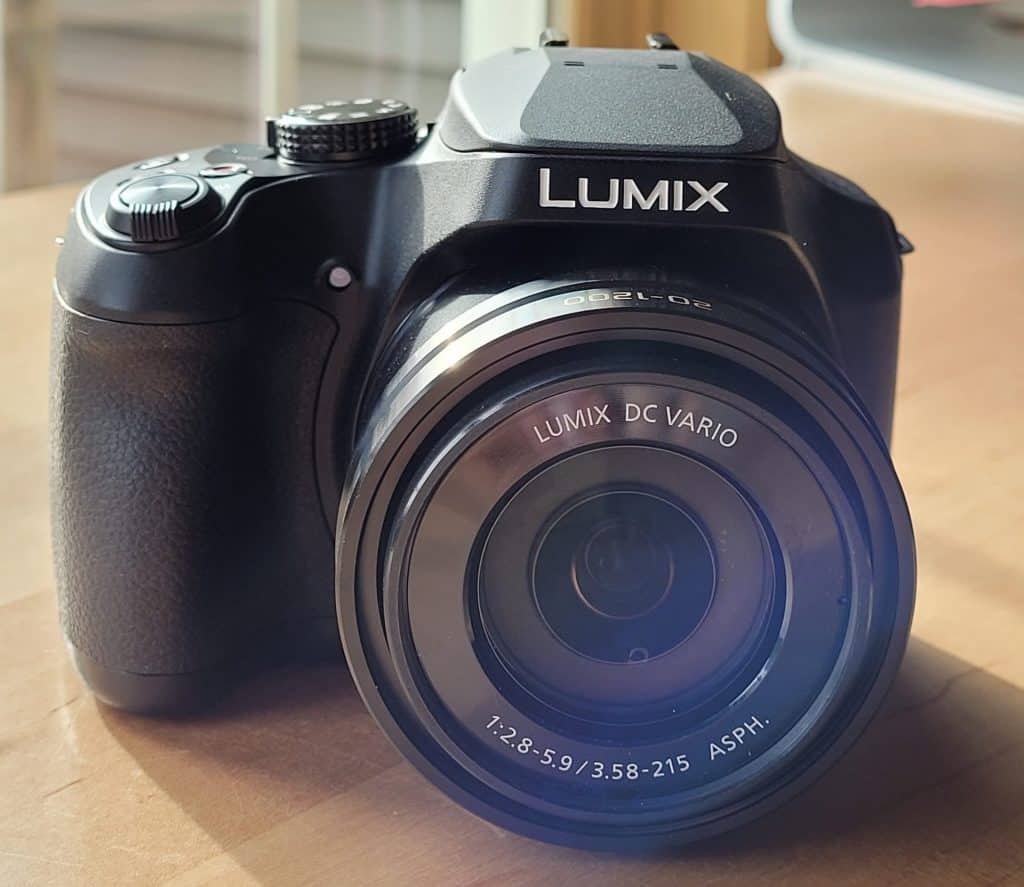
The Panasonic Lumix FZ80 is the ideal budget superzoom camera for the backyard birder who wants to capture bird closeups from the deck or patio and still get very good quality images.
If you prefer a camera on the smaller and lighter side and prefer to navigate the menu via touchscreen, this camera is for you.
When capturing shots of small birds at full zoom, its sweet spot is about 15-20′ away.
Key Features
| Make & Model | Panasonic Lumix FZ80 |
| Optical Zoom | 60x |
| Auto Focus | Quick |
| Image Stabilization | Yes |
| Frame Capture Rate | 10 fps |
| Sensor | 1/2.3″ (6.2 x 4.6mm) BSI CMOS |
| RAW Format | Yes, supports RAW |
Pros & Cons
Pros
- Good image quality when within 15’ of the subject.
- Good autofocus speed to focus on the bird quickly.
- Touch screen monitor to easily navigate the camera menu options.
- Small & light so it’s easy to carry anywhere.
Cons
- The viewfinder and monitor are too tiny to be useful for gauging the shot (even from a close distance or fully zoomed in).
- Image quality became soft around 20’.
- Doesn’t have a Bird mode so getting started was slower.
Panasonic Lumix FZ80 Test Observations
The Panasonic Lumix FZ80 doesn’t have a Bird mode so I wasn’t able to set it and start shooting right away. This is a minor annoyance but may be key if you’re new to photography.
The closest the FZ80 came to a bird mode was to set it to Scene mode and choose animals that appeared to be intended for pets – not fidgety tiny birds. So, it wasn’t intended for fast-moving wildlife.
The camera housing does feel rather “plasticy”. If you can get past that, the camera is great for a budget superzoom.
Optical Zoom Distance Test
Below are the results of the distance testing with the Panasonic Lumix FZ80 camera at full zoom.

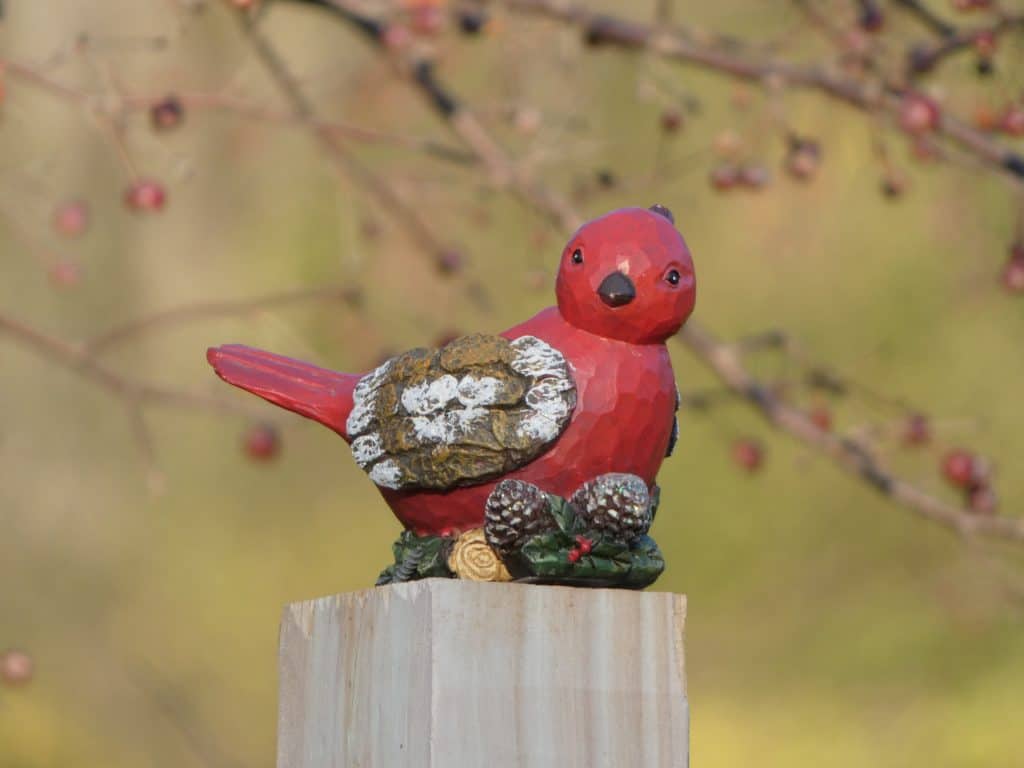
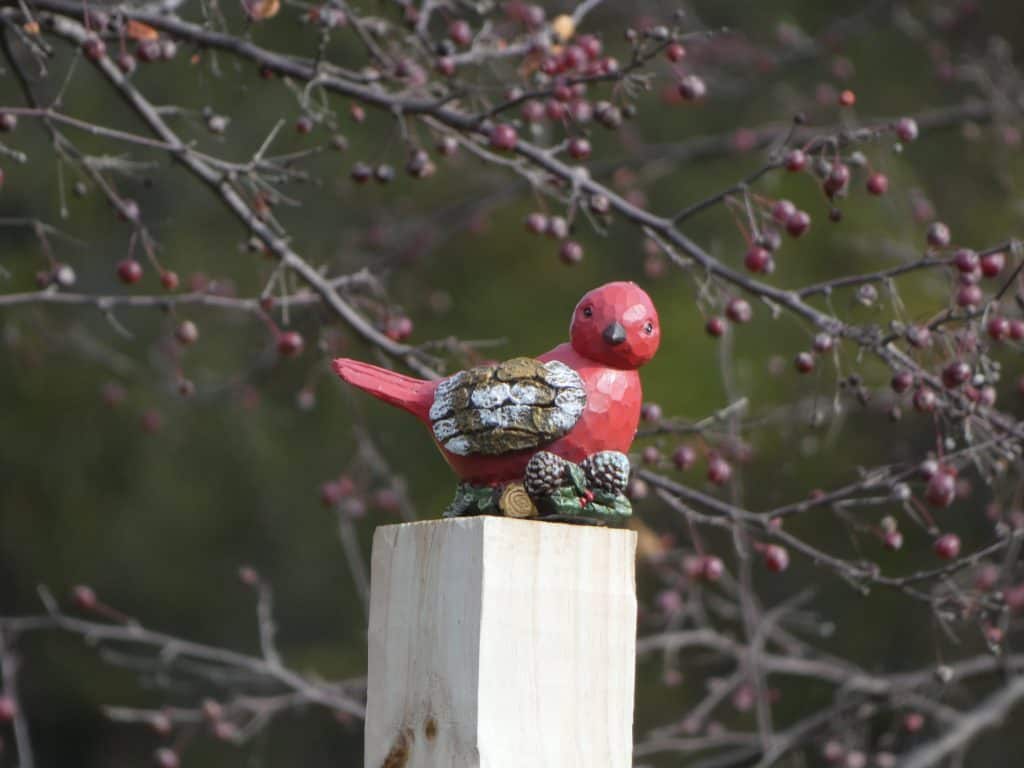
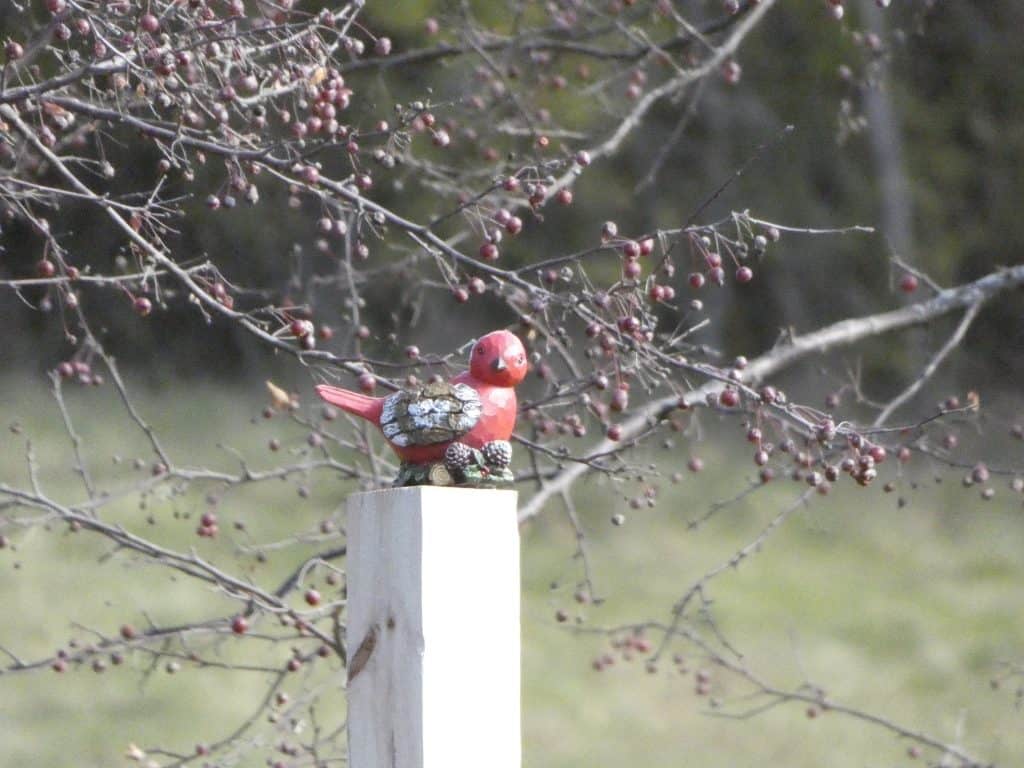
The Panasonic FZ80’s strength is image quality when closer to the subject – about 15′ or less. Beyond that, the image quality starts to soften – not as clear and crisp.
I took the following photos with the Panasonic Lumix FX80.
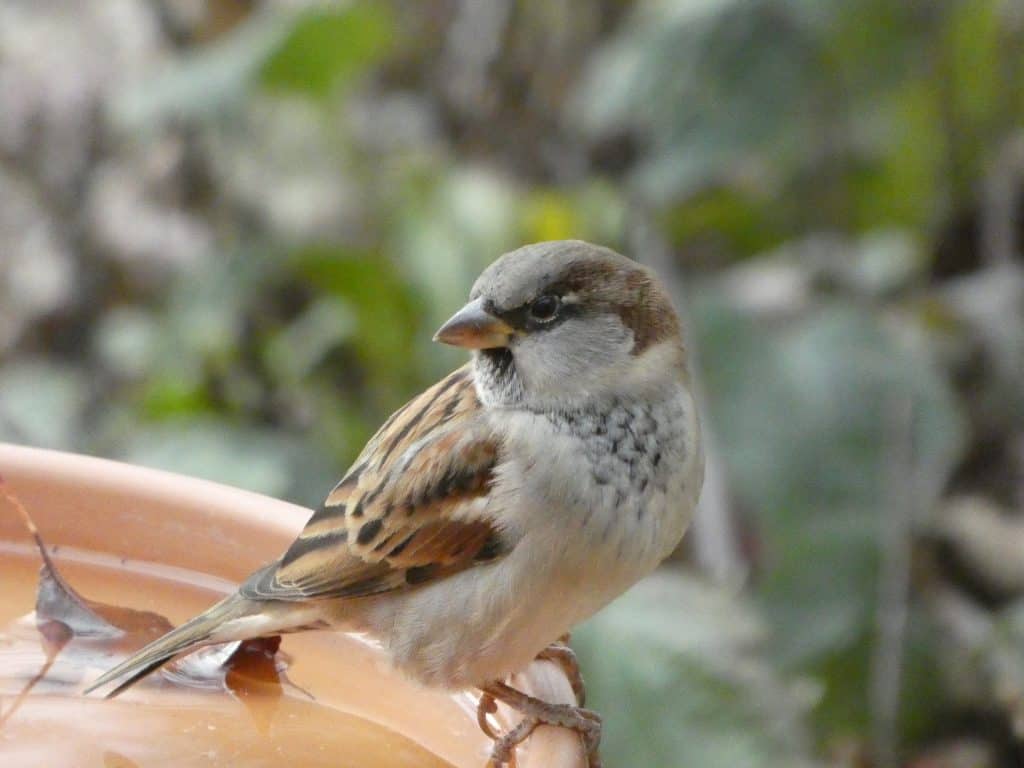
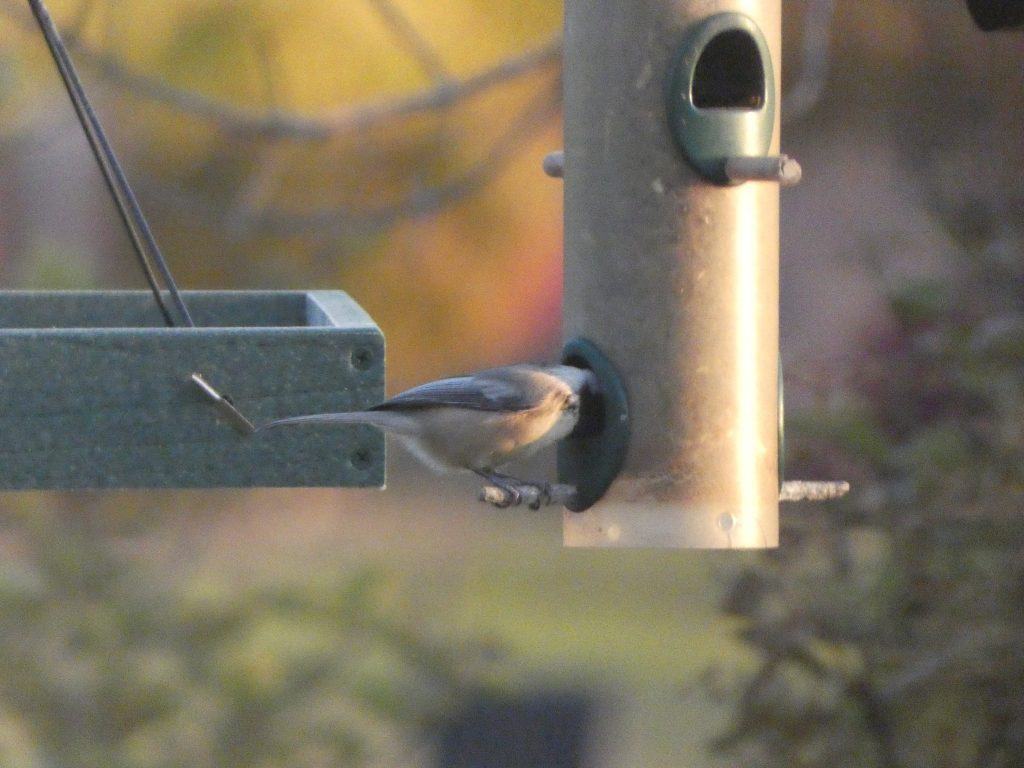
More Panasonic Lumix FZ80 Sample Images
Below are additional photos I took using the Panasonic FZ80. They’re unedited and perhaps not the best in terms of composition but provide a sample of the camera’s image quality and zoom.
I captured the next several photos using the Panasonic Lumix FZ80.
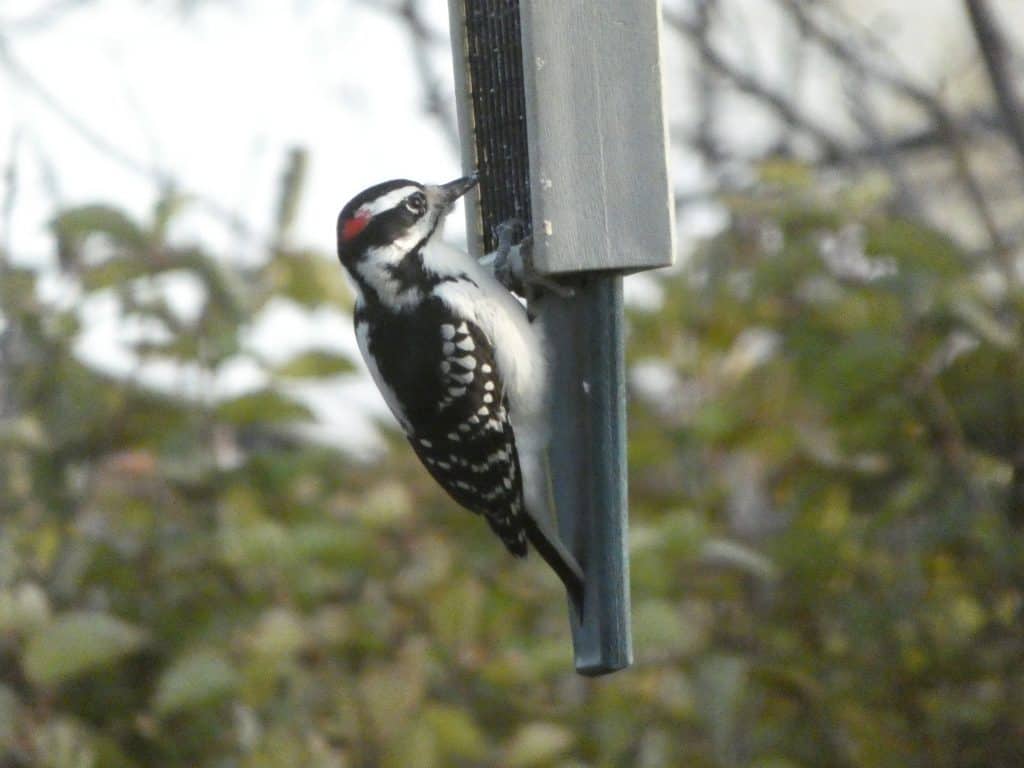
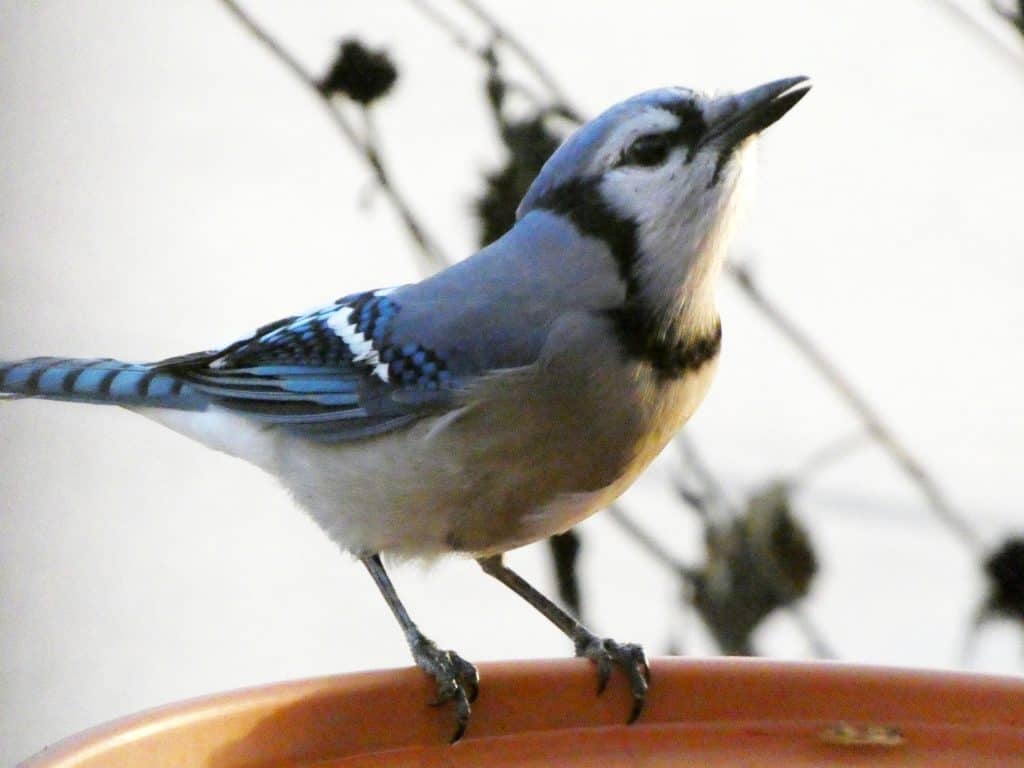
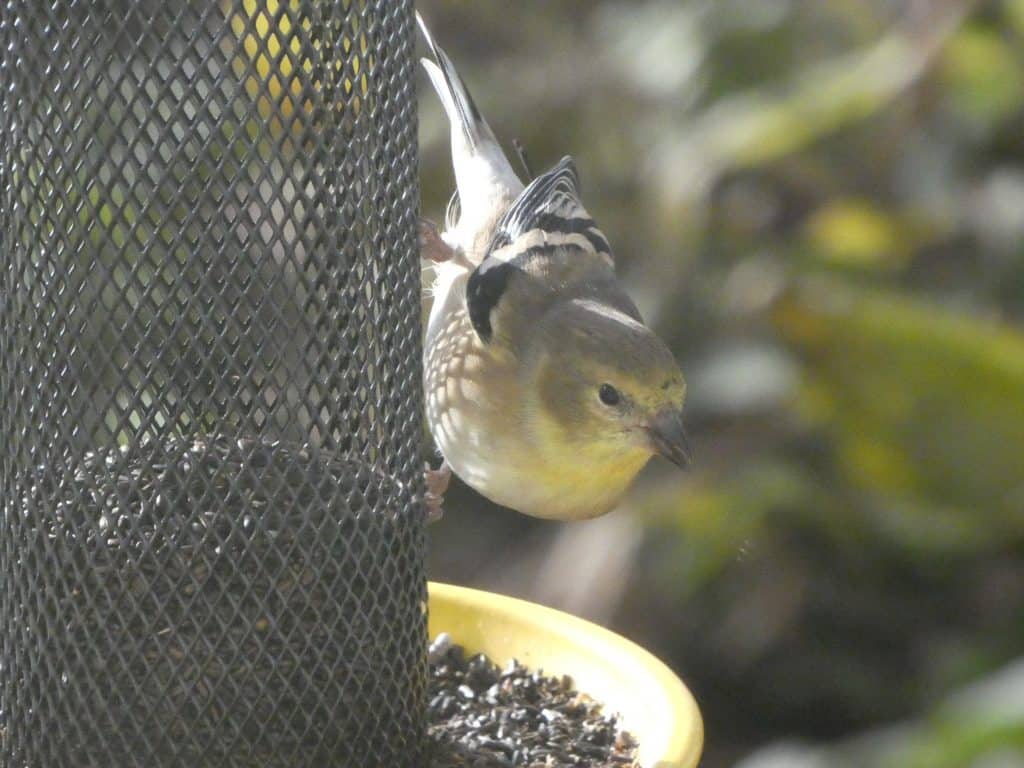
Sony CyberShot RX10IV Camera
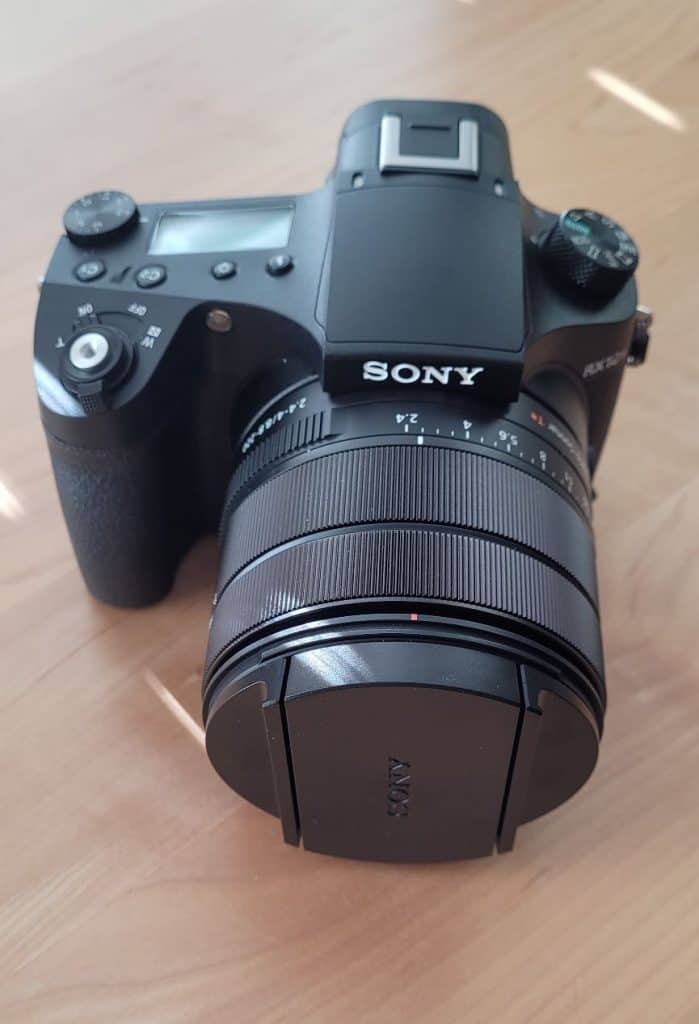
The Sony CyberShot RX10IV is the fastest superzoom camera available at 24 fps. The camera is perfect
for the backyard birder who wants great image quality and a huge variety of great images to choose from with each shot.
With the largest sensor of all the ultra zooms (1″) the resulting image is surrounded by plenty of “space” compared with the smaller sensor cameras. However, a bigger sensor also comes with a higher price tag.
The Sony CyberShot RX10IV is the most expensive superzoom – even more than the ones with astonishing zooms (the Nikon Coolpix P950 & P1000).
Key Features
| Make & Model | Sony CyberShot RX10IV |
| Optical Zoom | 25x |
| Auto Focus | Quick |
| Image Stabilization | Yes |
| Frame Capture Rate | 24 fps |
| Sensor | 1″ BSI CMOS |
| RAW Format | Yes, supports RAW |
Pros & Cons
Pros
- Blazing fast frame capture rate – 24 fps.
- Excellent image quality.
- Good autofocus speed to focus on the bird quickly.
- The current exposure settings are easy to identify in the top window.
Cons
- Pricey.
- Doesn’t have a Bird mode so getting started was slower.
Sony CyberShot RX10IV Test Observations
The Sony CyberShot RX10IV doesn’t have a Bird mode so I wasn’t able to set it and start shooting right away. This is a minor annoyance but may be key if you’re new to photography.
With only a 25x optical zoom I needed to get much closer to the birds to get a closeup.
The blazing-fast frame capture rate was immediately noticeable and left me with a huge choice of photos to choose from for a given shot. Besides this feature advantage, I didn’t notice any additional attributes that warrant a huge jump in price from the other superzoom cameras.
I really like the top window which shows the current exposure settings without having to
hunt through menus for them.
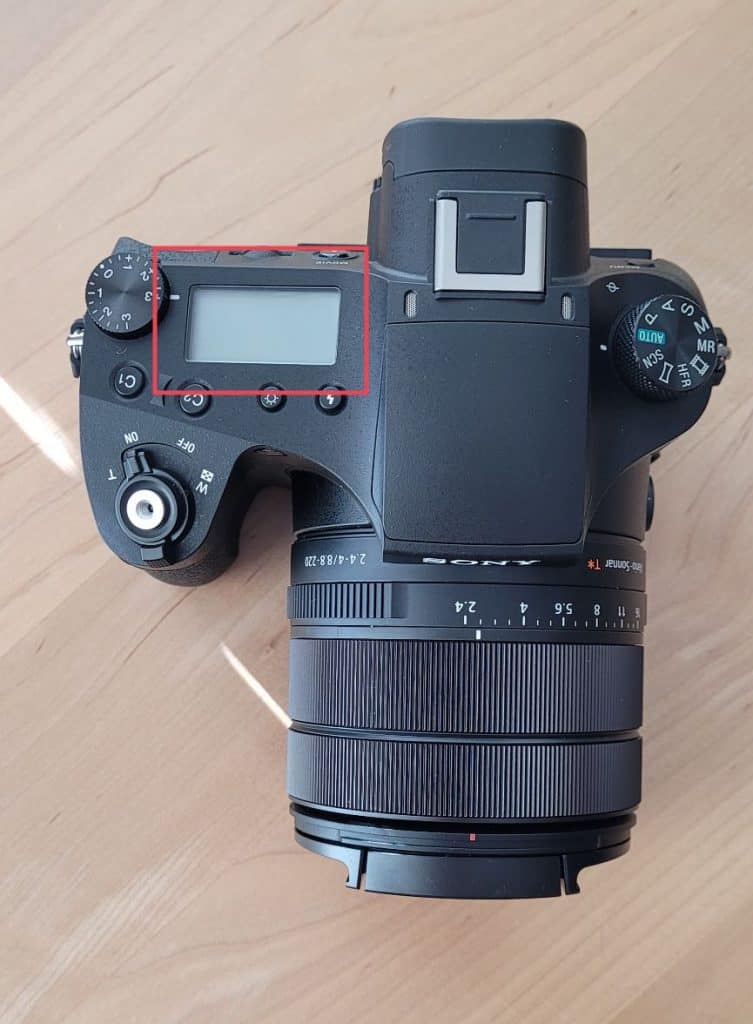
Optical Zoom Distance Test
Below are the results of the distance testing with the Sony CyberShot RX10IV camera at full zoom.
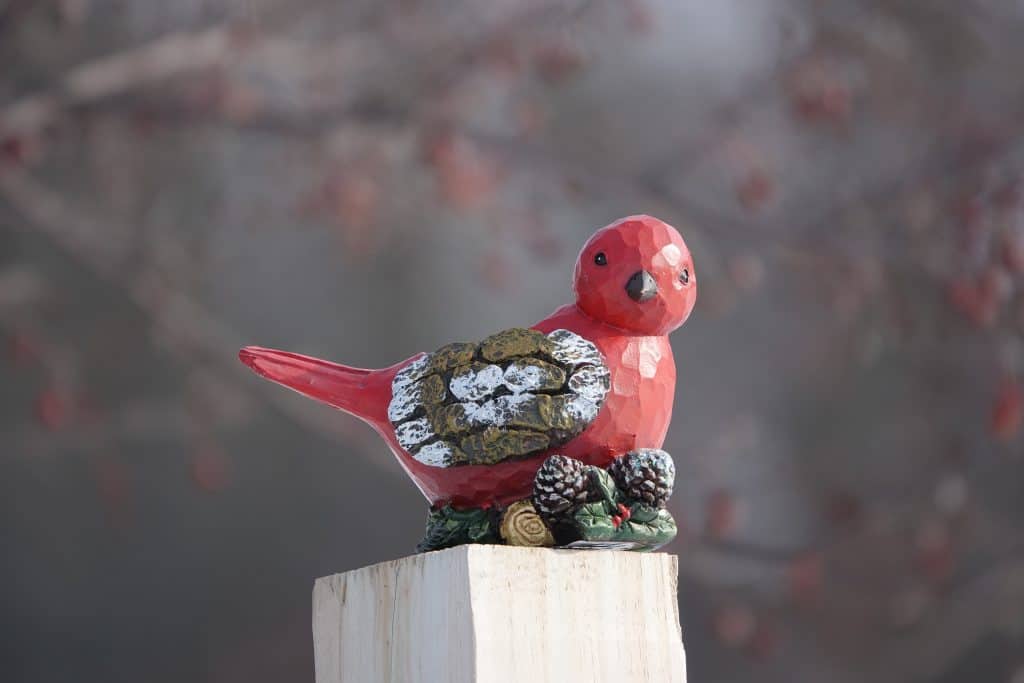
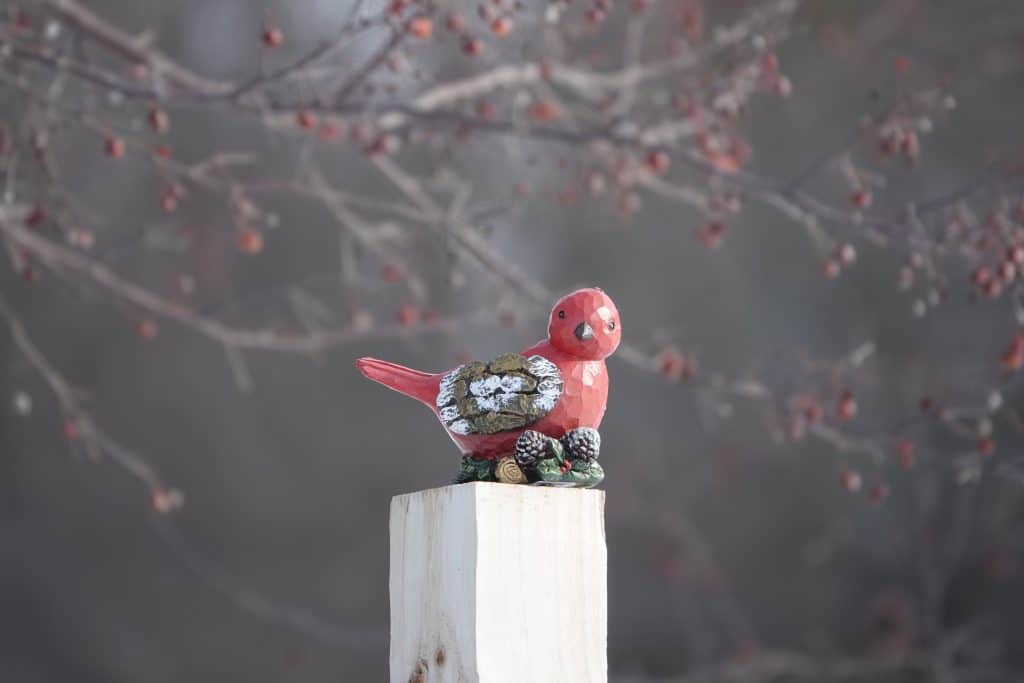
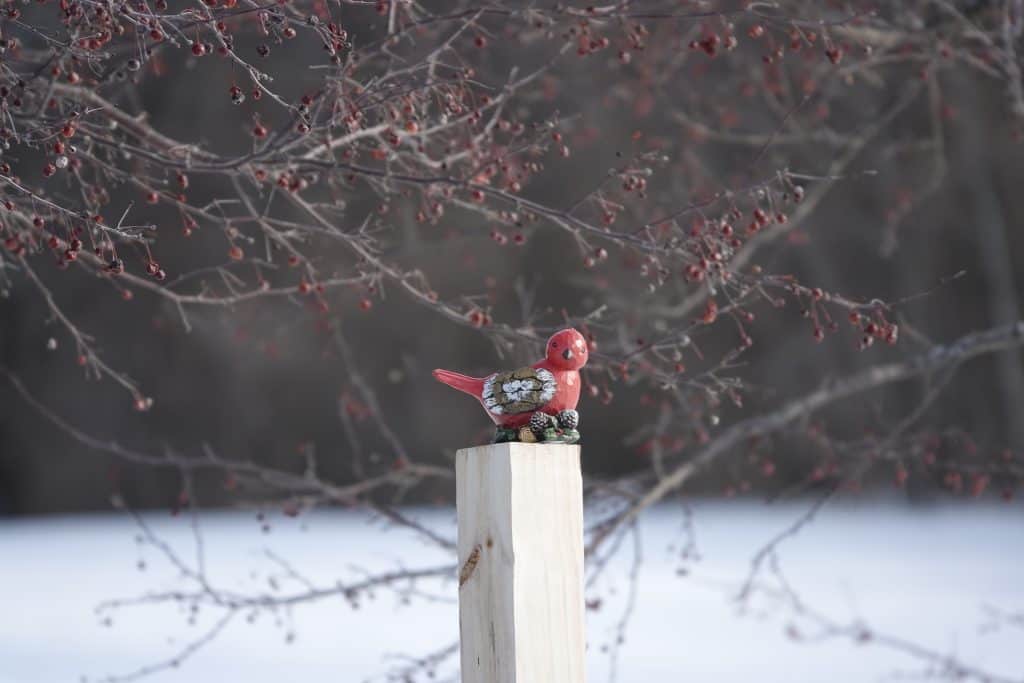
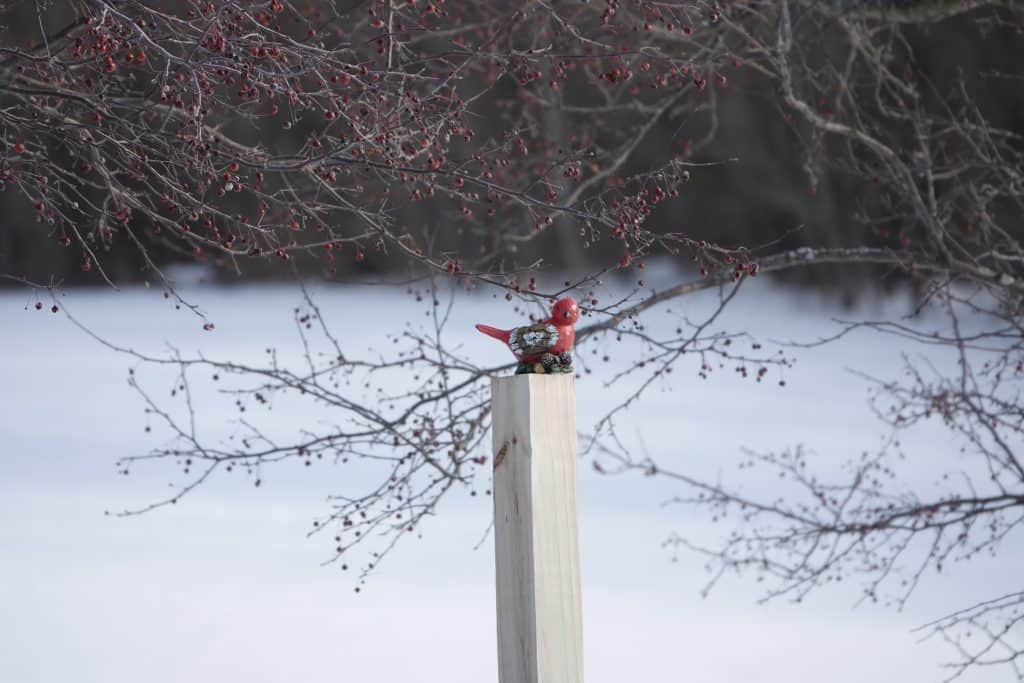
More Sony CyberShot RX10IV Sample Images
Below are additional photos I took using the Sony CyberShot RX10IV. They’re unedited and perhaps not the best in terms of composition but provide a sample of the camera’s image quality and zoom capability.
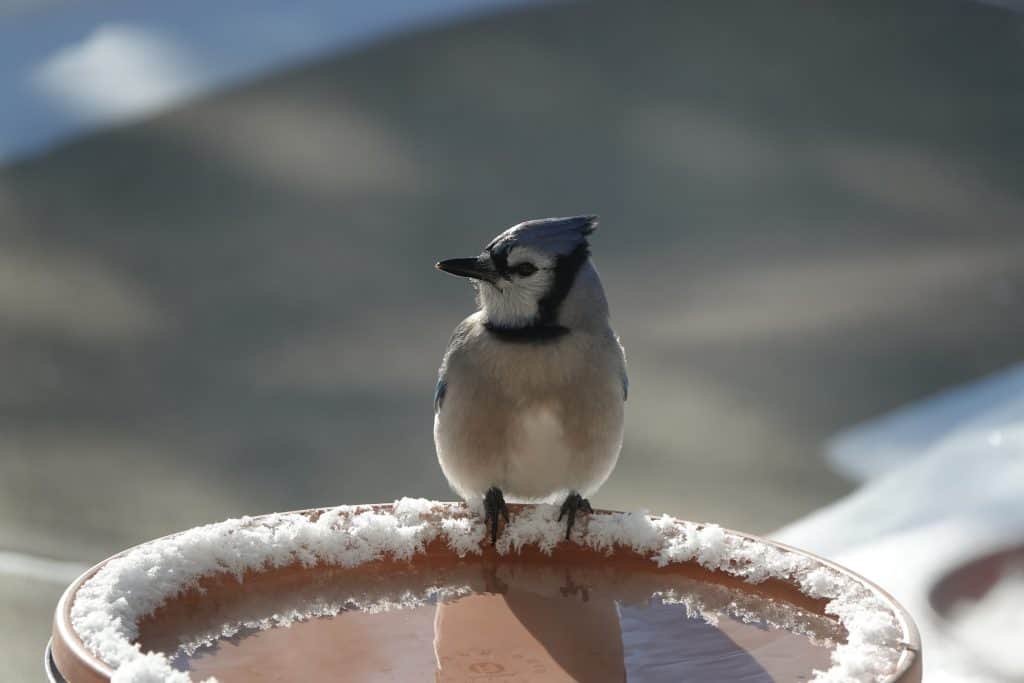
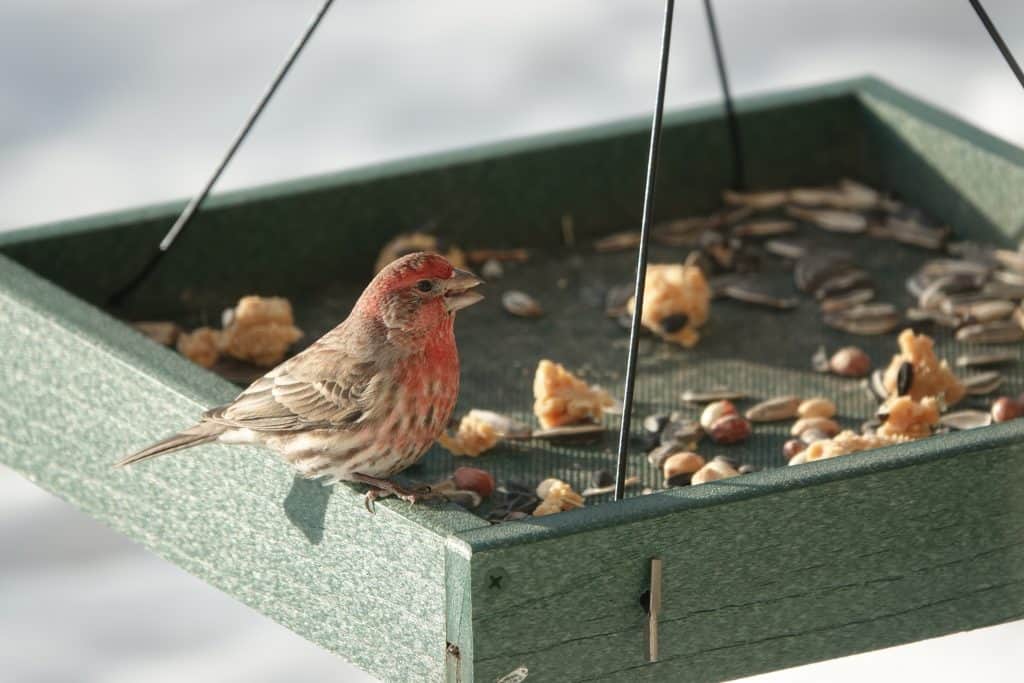
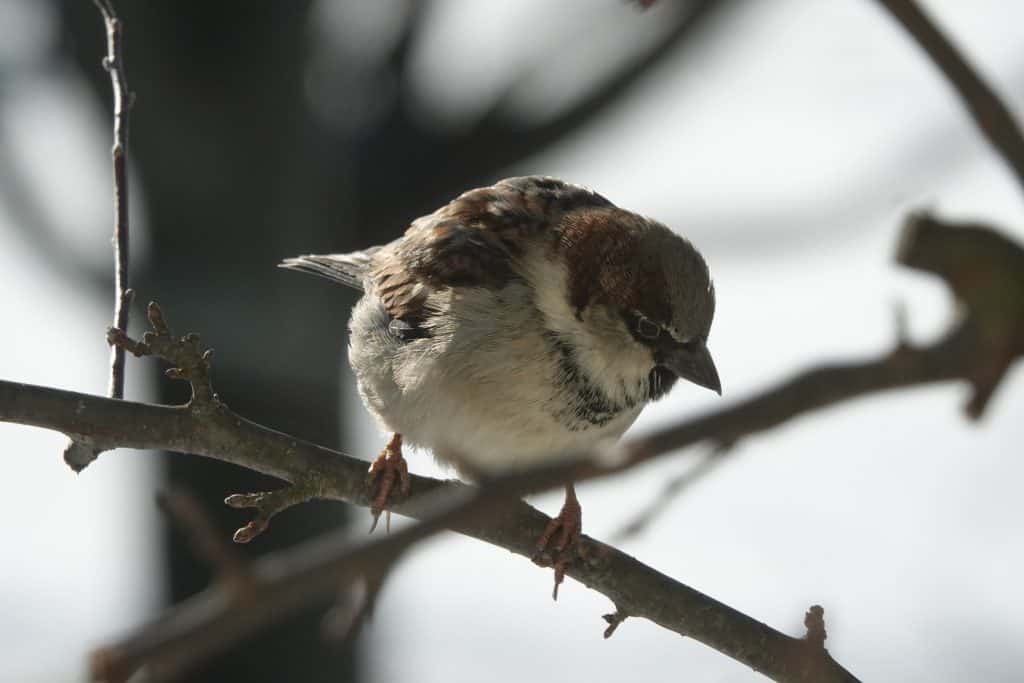
How I Reviewed the Superzoom Cameras
I purchased and tested each of the superzoom cameras I reviewed. The same tests were performed with each camera so they could be assessed equally.
First, I took several photos of a static subject (wooden cardinal below) at full zoom, without support (e.g. handheld) from distances of 15, 25, 50, and 75 feet from the subject.

This allowed me to determine if the superzoom camera was up to the task of zooming in close enough to capture up-close images of birds in a real-life scenario.
Note: Because the cardinal is made of wood with definitive edges, not soft feathers, the quality is going to be better than a real bird. For that reason, I didn’t use distance tests to determine image quality. It wouldn’t be fair.
Then I spent time using the cameras naturally, taking pics of birds around my yard and beyond.
I was mindful of how quickly the auto-focus was able to find a clear shot of the bird. How often I was able to capture the bird before it flew away and how often I wasn’t.
Using the continuous shooting features I wanted to be sure it was fast enough to capture enough pics of the bird (from perching to flying away) so I was left with several choice shots to choose from.
Finally, I analyzed the photos for image quality.
Keep Your Distance When Photographing Birds
In order to assess the cameras equitably, I needed to test using the same distances from the birds. But just how close should you be to a bird when taking pictures?
When photographing birds you should never be so close that they notice you (e.g. they appear spooked or rattled and fly away). The actual distance varies depending on how well you’re concealed by trees and shrubs, the brightness of your clothing, and the noise made by your camera, but 25′ away from the bird is the minimum.
The National Audubon Society suggests we keep enough of a distance that allows our subjects to behave naturally.
Besides that, if you’re too close to the bird it’s going to fly away and you get no shot.
Thinking about my own experience with birds in my yard, a distance of 50’ generally assures the bird hasn’t noticed me. If the bird approached me, I may be between 15-25’ away. If I’m taking pics through a window in my house, the distance is about 15’. In larger yards or out in the wild, a distance of 75’ (minimum) is likely needed.
By testing the 4 distances (15, 25, 50, and 75 feet) I felt many bird encounter scenarios were covered helping you to make the best superzoom camera choice depending on how you typically shoot photos of birds.
The Best Superzoom Bridge Camera According to Whom?
The Nikon Coolpix P1000 has the largest zoom capability of any ultra zoom camera available – a whopping 165x! But what does that mean? If the other point-and-shoot superzooms only have 50x or 60x zoom, is 165x overkill? Is 50x or 60x not enough?
Some manufacturers tout the fastest autofocus on this side of the Mississippi! That’s great, but is it fast enough to capture a fidgety bird? Is slower autofocus perfectly fine? I had to use the cameras in a natural setting in order to know for sure.
The “experts” say most bridge cameras have a sensor that’s too small to produce a quality image. But what’s that mean? My idea of quality may be different from the trained eye of a professional photographer. Or your idea of quality for that matter. I included the pictures I took within the reviews so you can decide for yourself.
I was excited to test the superzoom cameras for bird photography and provide you with practical information based on real, hands-on experience actually using the cameras so you can feel confident if you decide to purchase one.
Let’s get started with some background on camera types, how to choose a superzoom camera for birding and wildlife, and how I selected and reviewed the superzoom cameras for birding.
What is a Superzoom Camera?
A superzoom camera is a type of bridge camera that has very high optical zoom capability. Some manufacturers and photography experts use different terms to refer to these types of cameras including long zoom, big optical zoom, bridge zoom, and hyper zoom
Superzoom cameras are a great choice because they offer an affordable camera option with high zoom capability and great quality without the weight and bulk. Compared with a professional camera setup that includes the DSLR body and high zoom lens, superzoom cameras are smaller, lighter, and considerably less expensive. They’re ideal for people getting into wildlife photography as well as professionals who don’t want to carry a large, heavy setup into the woods.
In my research, I did not find a definitive number that qualifies it to be a superzoom vs. a regular old standard zoom. For the purposes of photographing birds, I looked at cameras with a minimum optical zoom of 25x.
Superzoom vs DSLR vs Mirrorless vs Bridge
There are three main types of digital cameras: DSLR, Mirrorless, and Bridge. Below is a brief summary of each type.
DSLR Camera
The DSLR (Digital Single-Lens Reflex) camera is commonly used by professional photographers. They consist of a camera body and interchangeable lenses.
DSLRs rely on a mirror inside the camera body to capture the light and direct the image to the viewfinder. This enables the photographer to see exactly what the image will look like.
Mirrorless Cameras
The Mirrorless camera is similar to the DSLR in that it has interchangeable lenses. It differs from DSLRs in that it doesn’t have a mirror. This enables a mirrorless camera to be smaller and lighter than the DSLR.
Also, the image displayed to the photographer in the viewfinder and screen (if it has one) is an approximation of what the image will look like rather than exactly what it will look like.
Bridge Cameras
The bridge camera, also known as a point-and-shoot, consists of the camera body and lens built into one unit. They’re also referred to as SLR-Style Compact.
Bridge cameras may have many manual settings available for the photographer to flex her creative side but are also known for preset modes so the novice can immediately begin shooting pics just by setting the dial (for example) to “Bird” mode.
Buying Guide: Superzoom Camera for Bird Photography
Bird photography is unique from other types of photography in that birds are tiny, fidgety, fly away without notice, and often make their appearance in the early morning and late afternoon when lighting is low – again, without notice.
When choosing a bridge camera with superzoom capability for bird photography there are a few key features the camera must have to help us take great close-up pictures of the birds.
Key Features
- Optical Zoom (Hello Superzoom!)
- Auto Focus
- Image Stabilization
- Frame Capture Rate
- Sensor Size
Combined, the above key features work together to provide great image quality and a clear and in-focus close-up of the bird. After all, that is what we want, right? Great close-up pictures of birds!
Let’s take a look at each of these features and learn why they made the “key features” list.
Optical zoom refers to the camera lens’ ability to get close to the subject – the birds. The higher the optical zoom the closer we can get to the bird which is crucial. Note: Digital zoom is a fancy way of referring to zooming in on the photo. You can disregard digital zoom because it doesn’t improve image quality – in fact, it introduces noise which results in poorer quality. I disabled digital zoom while testing the cameras in my review to ensure I was assessing optical zoom alone.
Autofocus: We see a bird, grab our camera, get it in the frame, zoom in, press the shutter ½ way to auto-focus, and click! A beautifully focused close-up of the bird. Or so we hope.
A fast auto-focus dramatically increases our chances of capturing that perfect shot.
With a slow auto-focus, our photo may show the tail end of the bird as it flies off! This is why auto-focus speed is so important.
All cameras come with an auto-focus feature, Some manufacturers state the auto-focus speed, usually in fractions of a second, while others do not. By testing each ultra zoom camera myself I’m able to gauge whether or not the camera’s autofocus speed is suitable for bird photography.
Image Stabilization: Camera movement is a leading cause of blurred images. Image stabilization helps by reducing camera movement and is particularly important with bridge superzoom cameras because not only is the photographer trying to hold the camera steady but also the long, extended lens when it’s zoomed out.
A monopod or tripod is also useful but not always practical.
Auto-focus and image stabilization work together to produce an image that’s in focus.
Frame Capture Rate (fps): Remember, our models (birds) are always on the go. Even while perching they may be darting their bodies here and there. For that reason, it’s helpful to enable the camera’s continuous mode which captures photos continuously versus one at a time. The multiple shots allow you to choose from a variety of images in hopes of at least one being the perfect pic.
Sensor Size: The job of the camera sensor is to capture the photons (light particles) that hit it and convert them to an electrical signal that the camera’s processor reads and forms into an image.
The camera sensor is important because it is a key factor that determines image quality. The bigger the sensor, the better the image quality.
However, as I alluded to in my introduction, your idea of great image quality may differ from mine and that of the seasoned professional photographer. So I invite you to be the judge. Review the sample photos I provide in this article and decide which image quality is good enough for you.
That said, the majority of the cameras I reviewed have the same sensor – 1/2.3″ (6.2 x 4.6mm) BSI CMOS.
What about Megapixels?
Time to bust the myth that “More megapixels are better.”
Note: The number of megapixels your camera has is important when having large prints made of your image. If you’re taking pics of birds to frame and hang a 10” x 20” photo on your wall, more megapixels may be better for you. For the rest of us, keep reading…
Remember when camera and smartphone manufacturers were regularly raising the bar in the megapixels department? It led us to believe that more megapixels are better.
While this may have been true back then when the average camera sported 4MP, it no longer is true. Today, even a camera with 12 MP is more than enough for most of us.
This is great news because in general, the higher the megapixel the slower the camera becomes at other tasks such as auto-focusing and continuous shooting – two key features for bird photography.
From an image quality perspective, the sensor size is a far better gauge of image quality than megapixels.
Non-Essential Features
Superzooms have other features you may want to consider beyond the key features mentioned above. Review the list and if something is personally important to you, make note of it before purchasing one.
- Size & Weight – Superzoom cameras come in a variety of sizes and weights. If you’ll be hiking great distances or just prefer a smaller, lighter camera, look for one that meets this need.
- Battery Life – Some batteries last longer than others. If you are easily annoyed by having to switch batteries when spending the day with nature, look for a camera with longer battery life.
- Price – Ultra zoom cameras range in price anywhere from $300 to $2,000. The less expensive cameras often mean you’re giving something up – but not always. Read my reviews carefully and decide for yourself if the more expensive camera is worth it.
- Bird Mode – Many cameras come with predefined “scene” modes that you easily switch to and all exposure settings are automatically set. Bird mode is one such scene mode. If you’re new to photography or just don’t want to deal with manual settings, look for a camera with a Bird mode.
- Durability – More durable cameras enable you to get thick in the woods without fear of damage. A well-cushioned camera bag can also help protect the cameras when not actively snapping pics. Decide if this is an important feature for you.
- Waterproof – Plan on taking photos in the rain or snow? Look for a waterproof camera if this is a concern.
- Video – Most if not all cameras are video-capable these days. If video is or will be part of your photography life, make sure the camera has the latest and greatest format, 4K, and has a demonstrated ability to focus while in video mode.
- Audio – Same as video, if you intend to capture audio of your videos make sure this feature is available.
- Image Sharing – Nowadays many people want to easily share their images online. If the simple image-sharing capability is important to you, be sure to check out the camera’s capability for it.
- RAW Image Format – If you plan to do some backroom editing (e.g. with Lightroom or PhotoShop), you’ll want to take photos in RAW format. All cameras shoot in JPG format but not all support RAW. If this is important for you make sure RAW is supported.
- Connections (Wi-Fi, Bluetooth, HDMI, USB) – Determine what you plan to do with your amazing bird photos. Then determine how the photos will get there. Popular options include: Transfer to the computer via Wi-Fi, USB cable, or Bluetooth. Transfer to a smartphone (to share online) via Wi-Fi, app, or Bluetooth. Show on TV or monitor via HDMI cable. Don’t have Wi-Fi? Make sure the camera has Bluetooth capability.
Frequently Asked Questions
How is Bird Photography Different from Other Types of Photography?
Bird photography is unique from other types of photography because the models (birds) are very tiny, appear without notice, and don’t stay still for long. Bird photography requires equipment that quickly zooms into tiny subjects and focuses very, very fast. It also requires the photographer to be patient and aware of the birds’ behavior so they can plan for their arrival while at the same time being ready to shoot because you may only have one chance.
What’s the best time to watch birds?
The best time to watch birds is between dawn and 10:00 AM when they are most active. When inclement weather is approaching they will be active even longer.
How Can You Tell if a Camera Lens is Zoomed?
You can tell if a camera lens is zoomed because the lens is protruding out from the camera body.
The Canon SX70 vs Nikon P950 – Which Camera is Better for Birding?
The Canon SX70 and Nikon P950 are great choices for birding photography.
- Both cameras have the massive zoom capability you need for tiny subjects such as birds (the Nikon P950 has 83x zoom while the Canon SX70 has 65x).
- Both cameras have fast autofocus needed for fidgety birds that take off without notice.
- Both cameras also have very fast frame capture rates to grab a lot of shots. This ensures there will be several keepers (the Nikon P950 has a 25 fps frame rate while the Canon SX70 has 12 fps).
Deciding between the two cameras for birding comes down to great vs astonishing zoom capability, camera size & weight, and how long you’re willing to wait for the camera to arrive at your doorstep.
Choose the Nikon Coolpix P950

If you want the maximum zoom available, the fastest frame capture rate, are willing to pay a bit more, don’t mind a moderately weighty camera, and are willing to wait for it to arrive at your door – choose the Nikon Coolpix P950. Check out my full review above.
Choose the Canon Powershot SX70 HS

If you want the amazing zoom to capture those tiny birds but don’t need the maximum zoom, fast frame capture rate, lighter & smaller camera, and want it immediately – choose the Canon SX70. Check out my full review above.
Key Takeaways
It can be overwhelming to find a superzoom camera that suits your needs for bird photography. I was in the same position which is why I dove into testing the top superzoom cameras myself.
I learned that whether you’re an all-around birder who likes to venture to parks and nature centers to satisfy your bird photography needs or someone who just enjoys their backyard, there’s a superzoom camera for you.
Of all the superzoom cameras I bought and tested, I chose to keep the Nikon Coolpix P950 for its amazing zoom of 83x and all-around great quality. To summarize my findings of the best superzoom cameras:
- The Nikon Coolpix P950 is the best overall superzoom camera.
- The Nikon Coolpix P1000 has the largest zoom capability.
- The Panasonic Lumix FZ80 is a great budget option.
- The Sony Cyber-Shot RX10 IV is the fastest choice.
- The Canon PowerShot SX70 is the best superzoom compact camera.
What about you? What’s been your experience shopping for or using superzoom cameras for birding? Do you have some advice to share? Would love to hear from you! Leave a comment below.

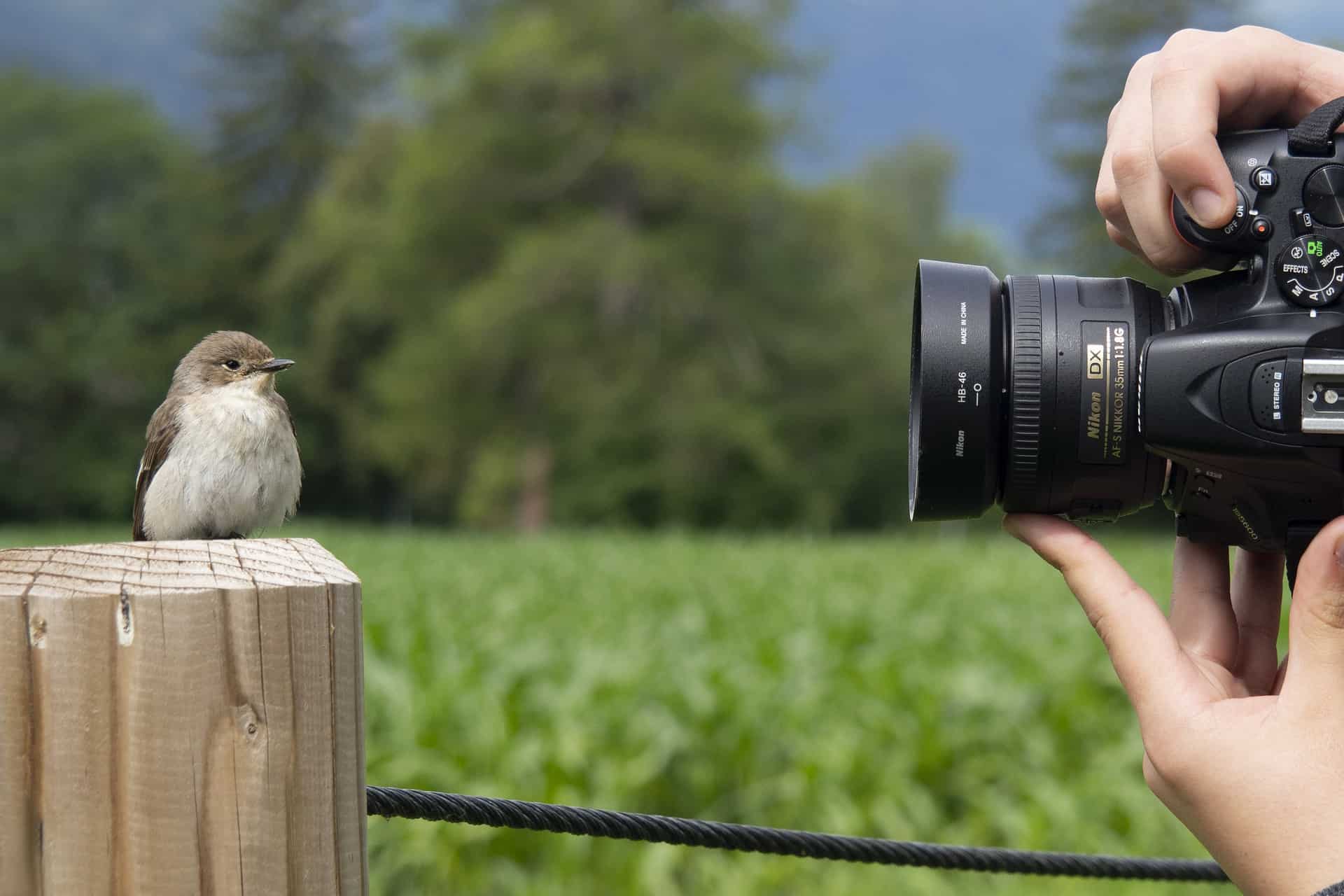
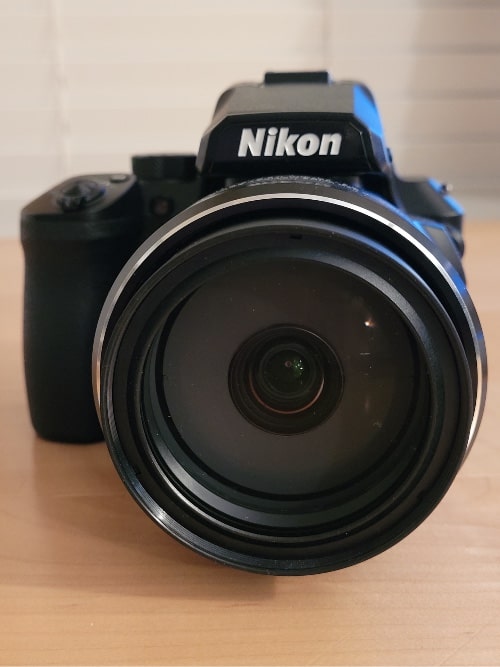
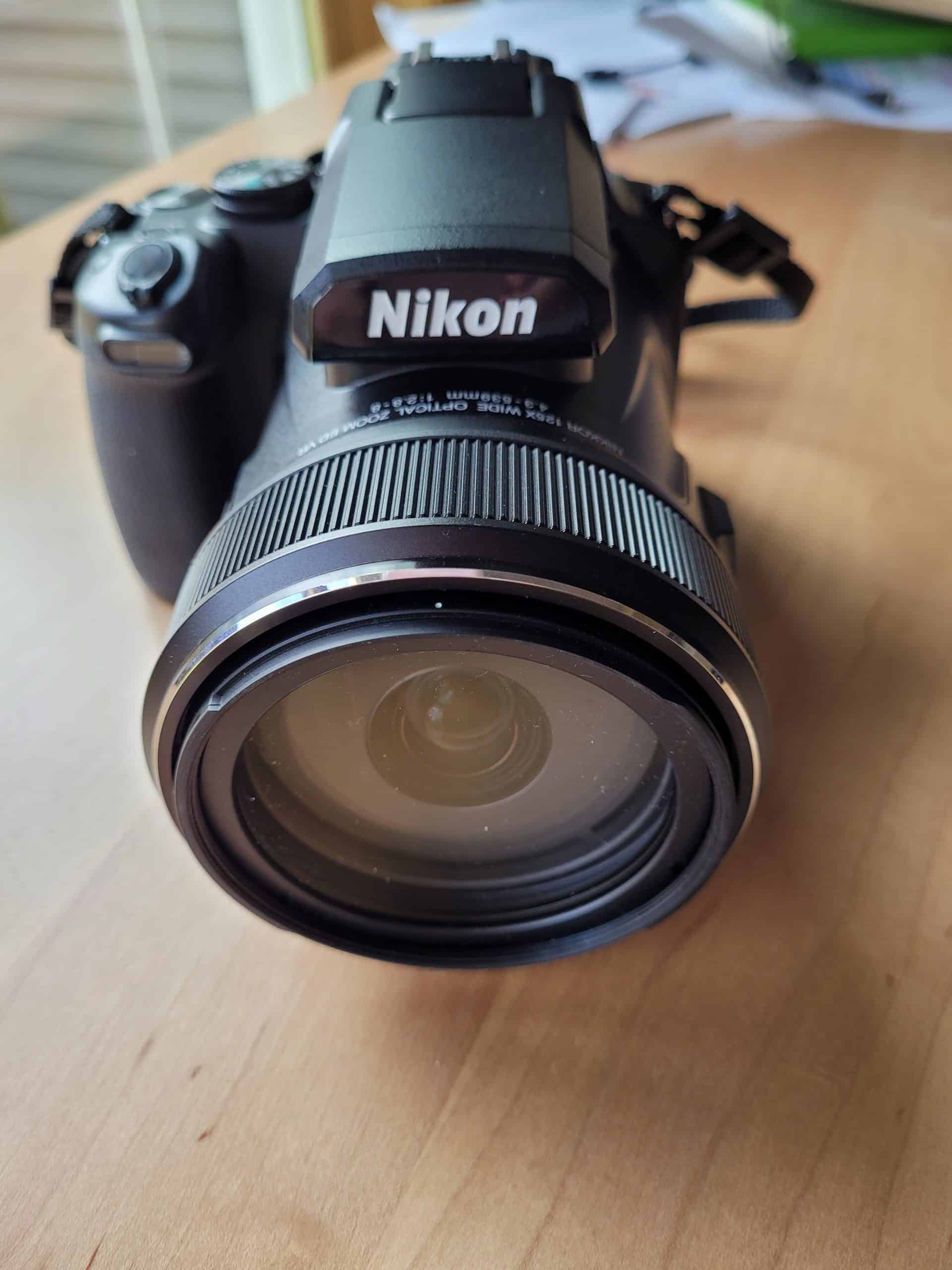
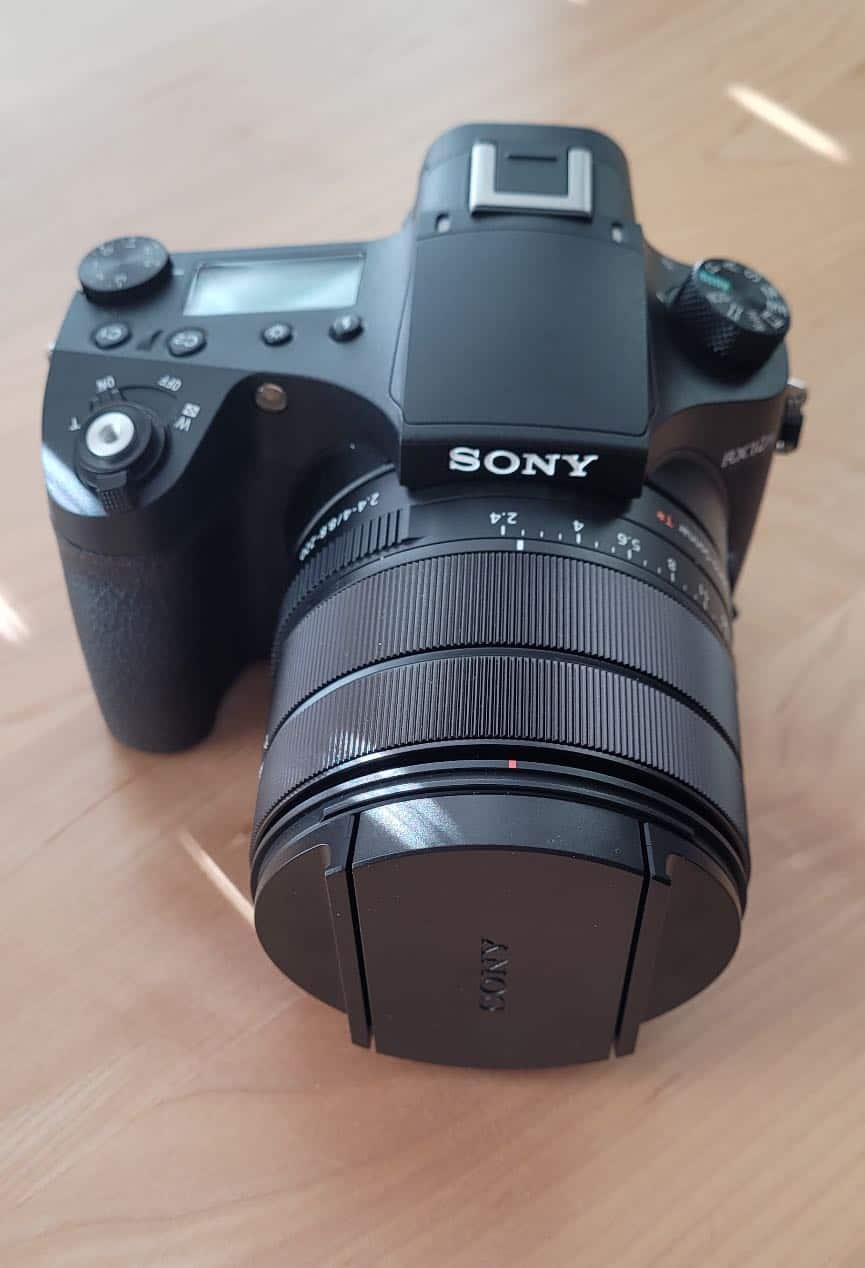
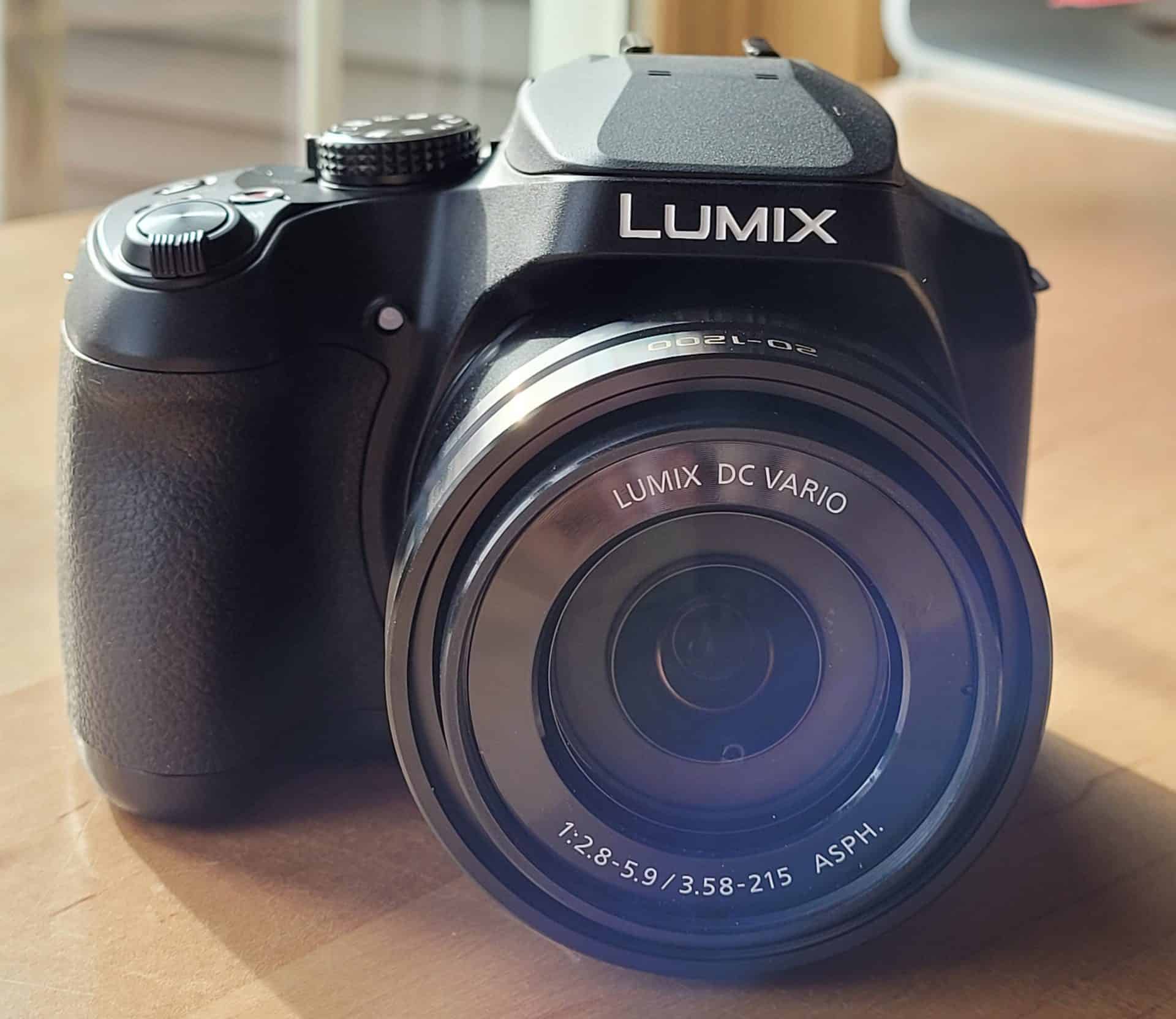
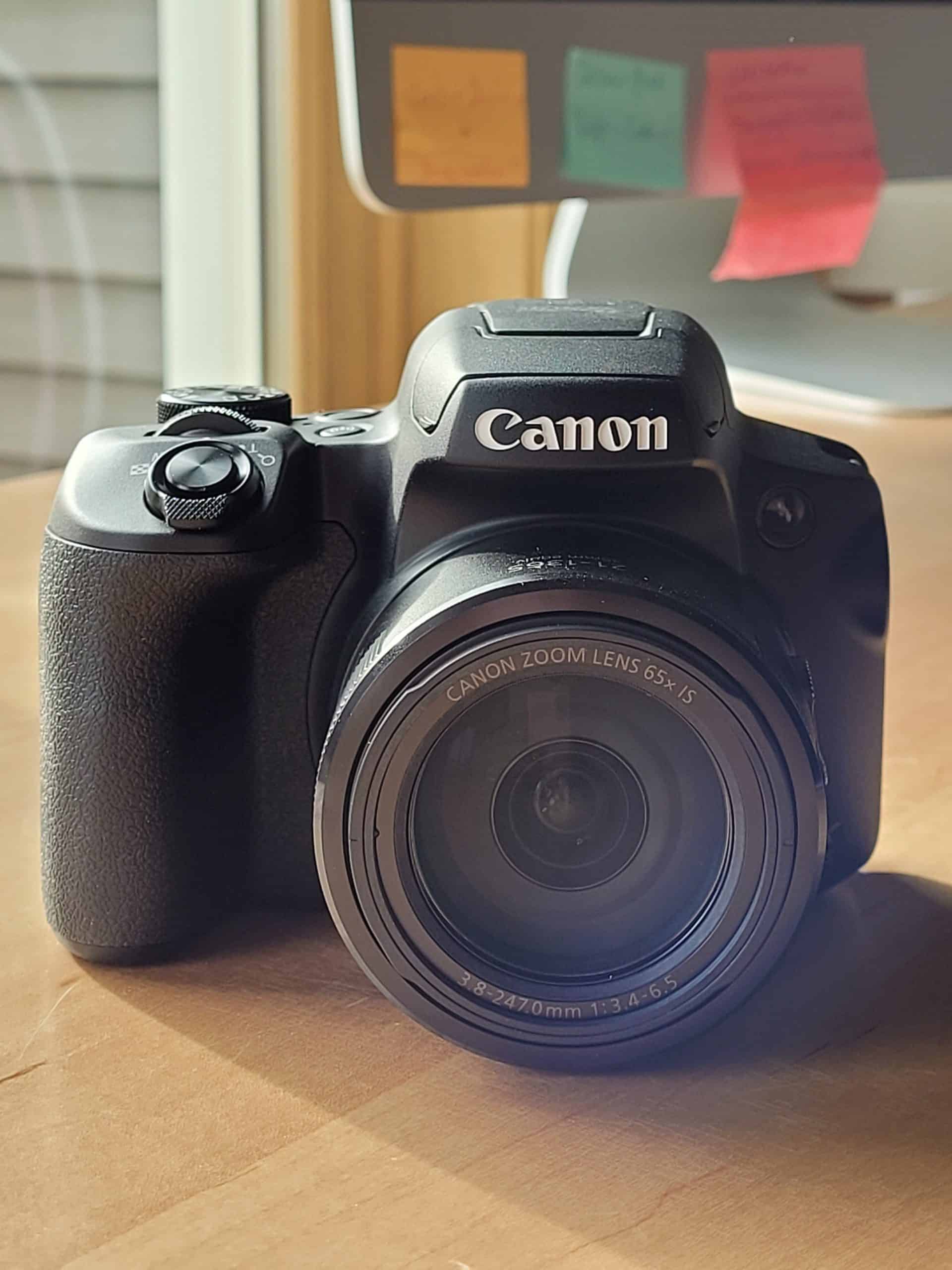

I’ve read your articles about best cameras for bird photography and they’re very informative. When I bought my first camera I struggled to find information that was easy to follow for someone who knows almost nothing about cameras or photography. My first buy was a Panasonic Lumix and I love it. Then I got the Nikon Coolpix P950 so I could take pictures of birds sitting further away, and it’s a great camera for someone like me: easy to use, intuitive, really nice for bird photos. I didn’t see your articles when I was shopping around, but I sure wish I had! It was hard to read through and try to make sense of more technical descriptions, features, and tips. This is a great website, thanks!
Thank you for this excellent and thorough article!! I’m an avid birder and also heading to Africa for a safari in 2023, so I’m in the market for a new superzoom. Very glad I found this article and I appreciate the care and detail you brought to it.
Hi Tammy,
I am so glad I found your photography blog!
I’ve been taking pictures with my smartphone for years and
before that I used the most basic of economical digital cameras.
I’m a complete novice, however I’d like to get better shots of my backyard birds, document retired life travel & road trips, and take pictures of the grandkids. I am looking for a good quality beginner’s camera and
your reviews of beginning birding cameras and superzoom cameras
have been extremely helpful. Thanks for the great start to a new hobby for me. I’ll continue to follow your blog for more tips.
Warmly,
Hello Tammy, appreciate your comprehensive blog regarding super-zoom cameras for birding. I have used 3 different super-zooms for 10+ years, they are amazing for video work. Age and constant use has put them behind in the quality stacks, with the noisey zoom function being audible in video. The zoom function being smooth and quiet is important me, did you happen to test that? My more current Lumix DC-TZ220 and older Canon SX50HS are at end of life and am looking to replace it… your blog is most helpful, it’s time for a larger sensor I think.
Thank you, Anne – Melbourne Australia
Hi Anne! I did not focus on the video zoom feature but will make a note of it for the next update.
Thank you Tammy!
A really useful, practical review, ideal for novices like myself.
Alex
Thanks Alex!
Thank you for the great article, Tammy! I have had bridge zoom cameras before (Earlier Canon and Panasonic models) but always go back to my “big rig’ for birding. I have a Nikon D5200 with a Tameron 600 mm lens. With the weight of this set-up, I am finding that I am taking it less and less on my hikes, though it takes wonderful bird images at a distance. Because of this, I am fussy about image quality in a Bridge/Superzoom Camera. Your updates on the latest cameras are very informative.
TIP: My Nikons have always had a “Sports Setting” that I use 100% of the time for birding and fast-moving subjects. Perhaps some of the superzooms you reviewed offer “Sports” mode in lieu of “Birding mode”. Happy Birding! : )
Hi Jeanie! I’m glad you enjoyed the article :). And, thanks for the tip about Sports mode. I’ll check it out!
I have been trying to find a budget bridge camera to replace my Canon SX50. I recently tried a Fuji Finepix S1 because it was weatherproof, but I was disappointed with its maximum 1200mm zoom as it seemed more like 1050mm compared to my Canon.
Having read quite a few ‘Top 10’ bridge camera reviews I decided to go for the Panasonic Lumix FZ80/82 and was lucky enough to get a hardly used one, with four extra batteries and a couple of filters off eBay for £250 (US$ 315) so I’m glad that, even now, that it seems to be considered the best budget superzoom.
I wish I’d read yours first as it seems the most rational and unbiased of all. A great read, thank you.
Hi Tammy, thank you for a great article.. Your review of the cameras has helped me a lot in choosing the best birding camera.. Now, if I only have the budget for any of the cameras you have reviewed, that would be even greater.. ????